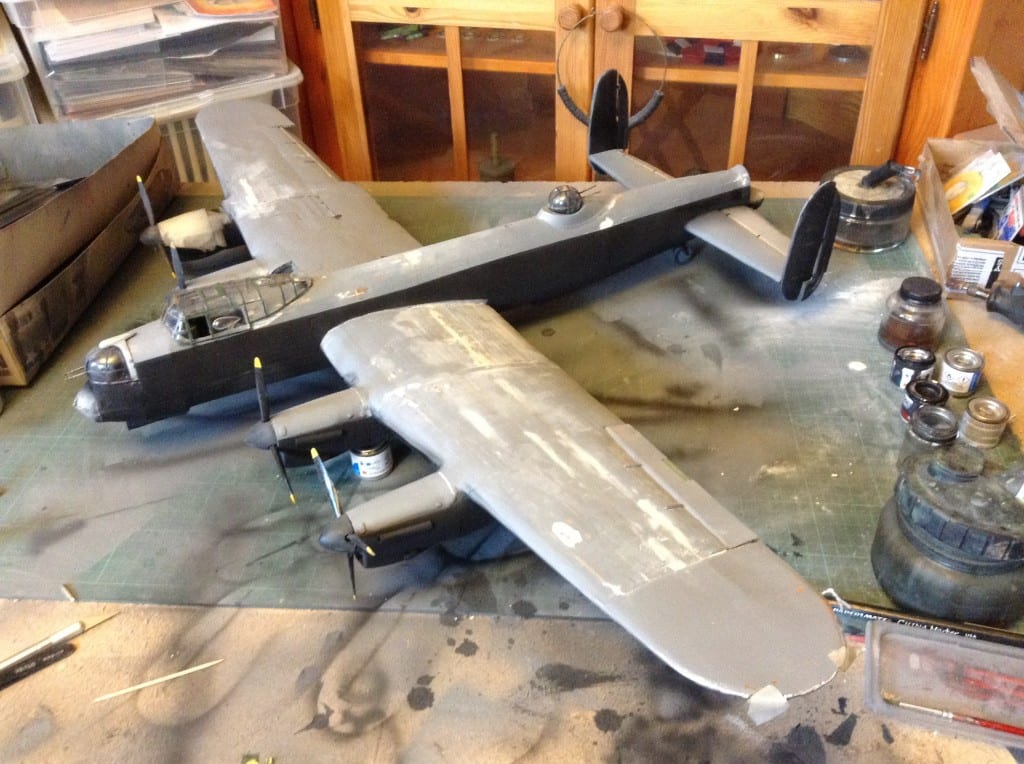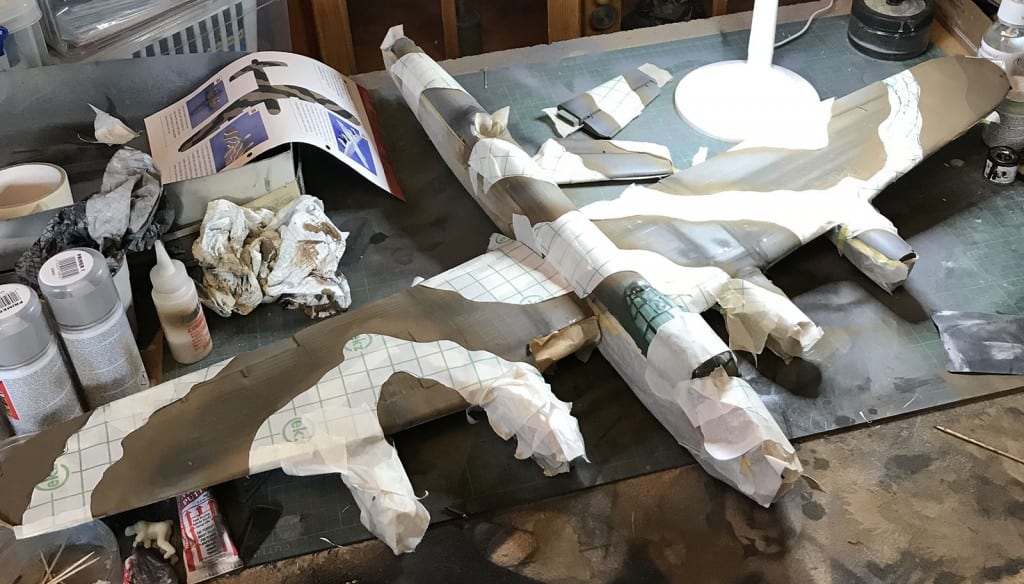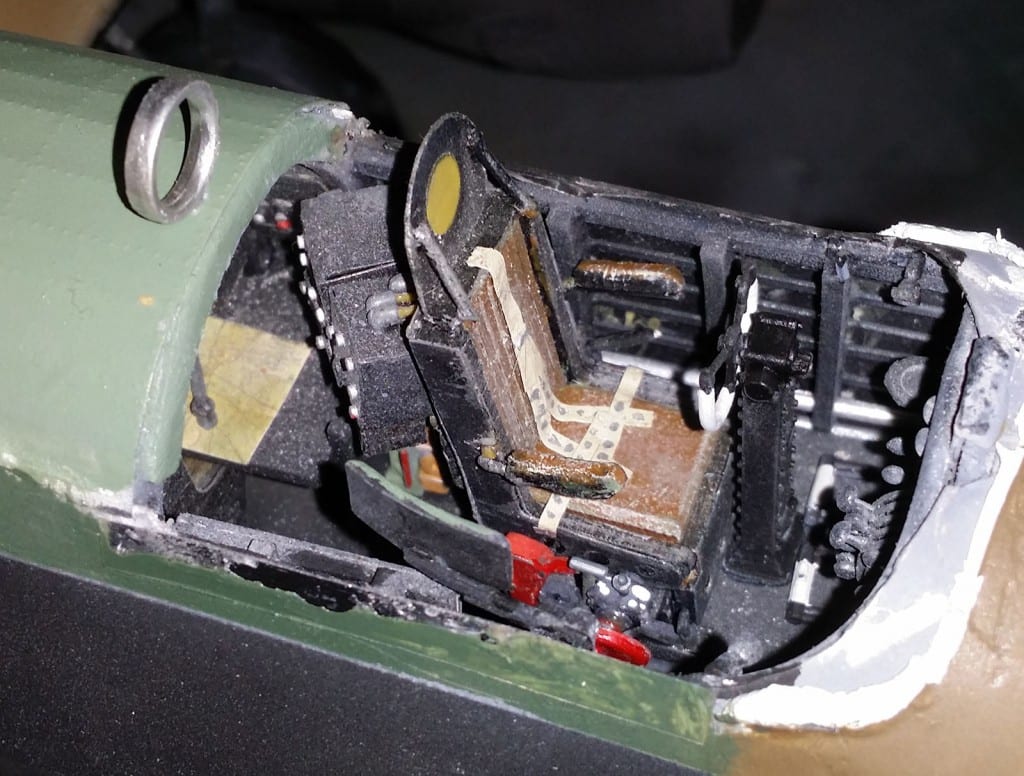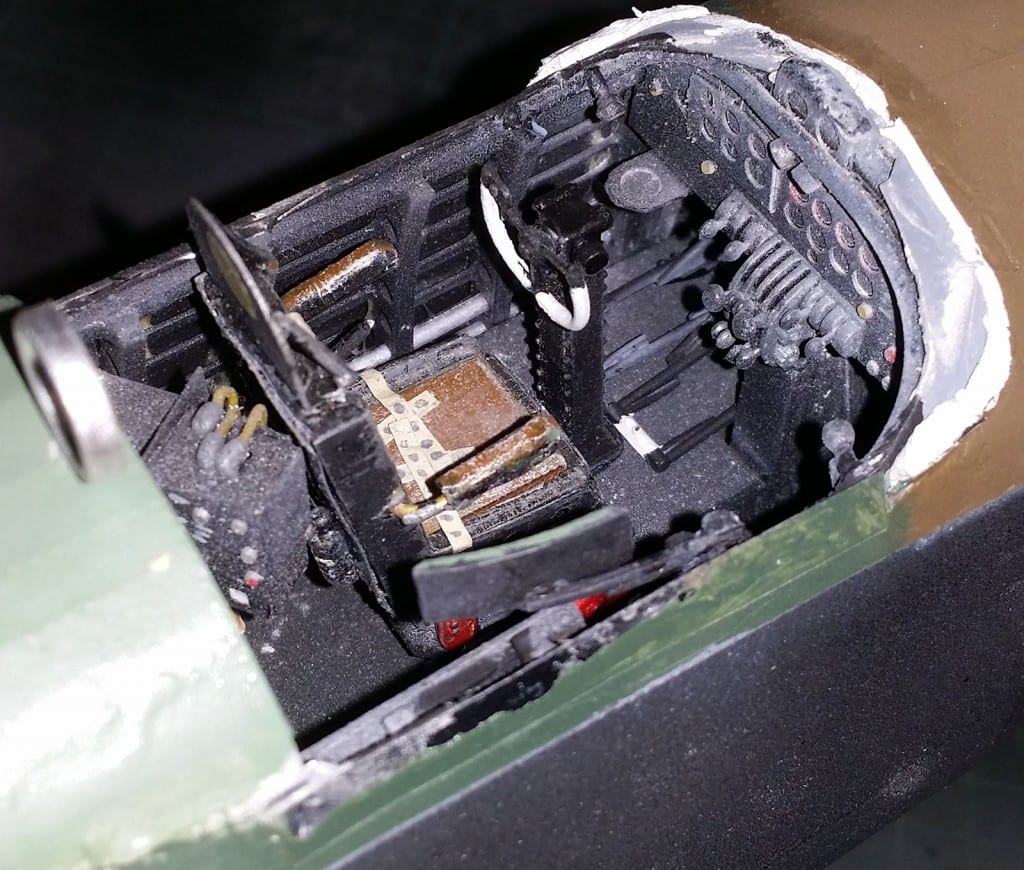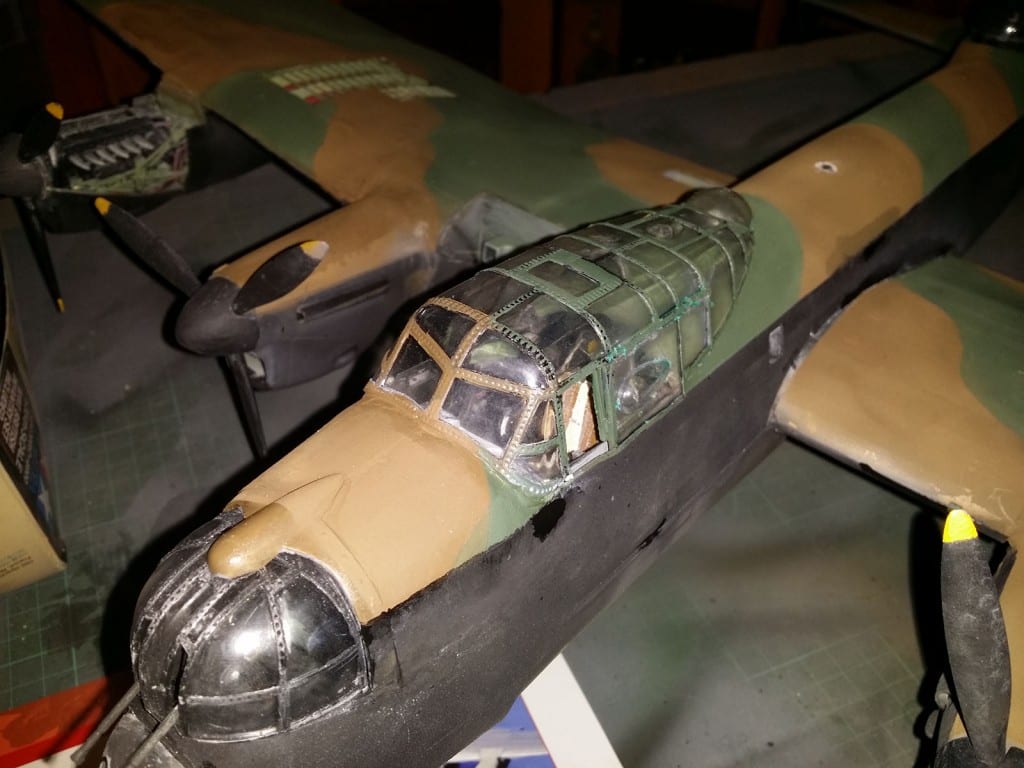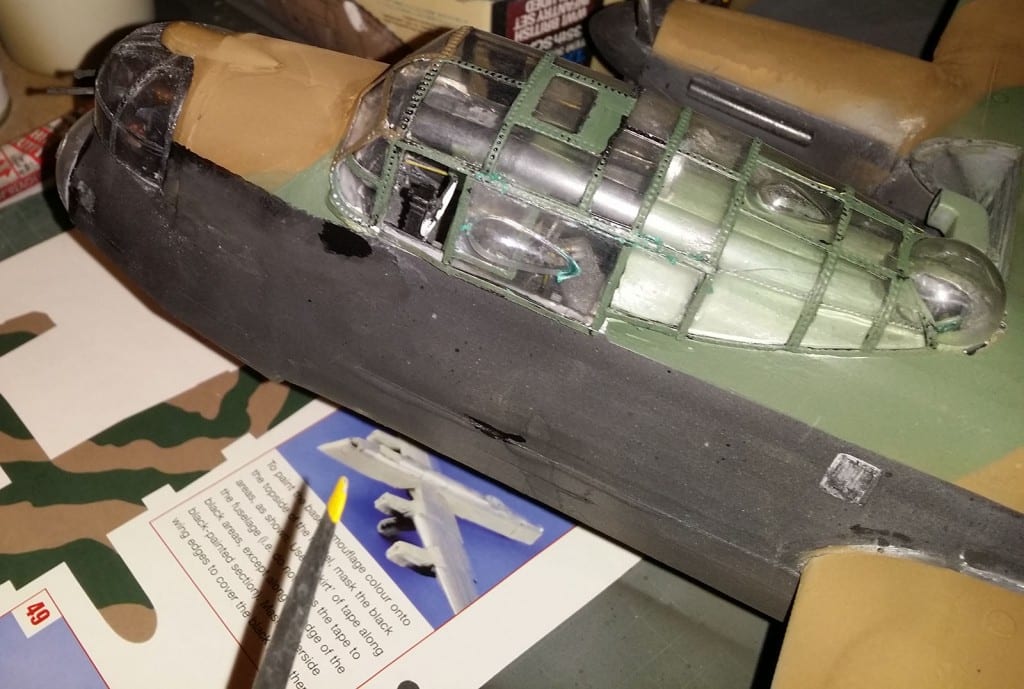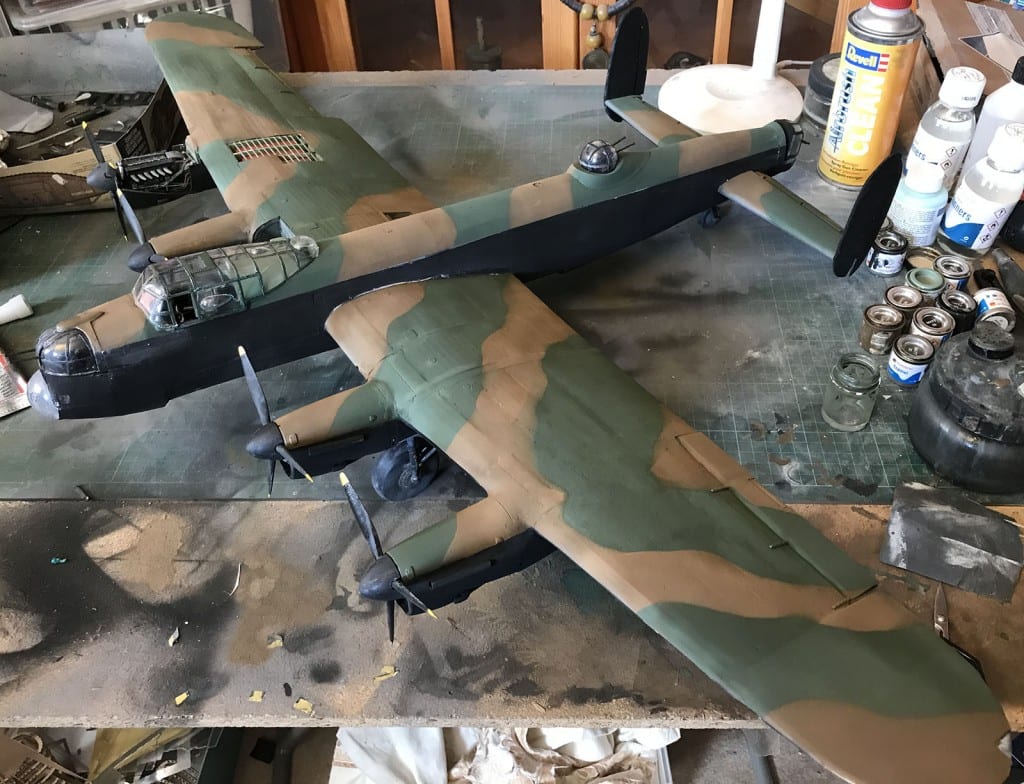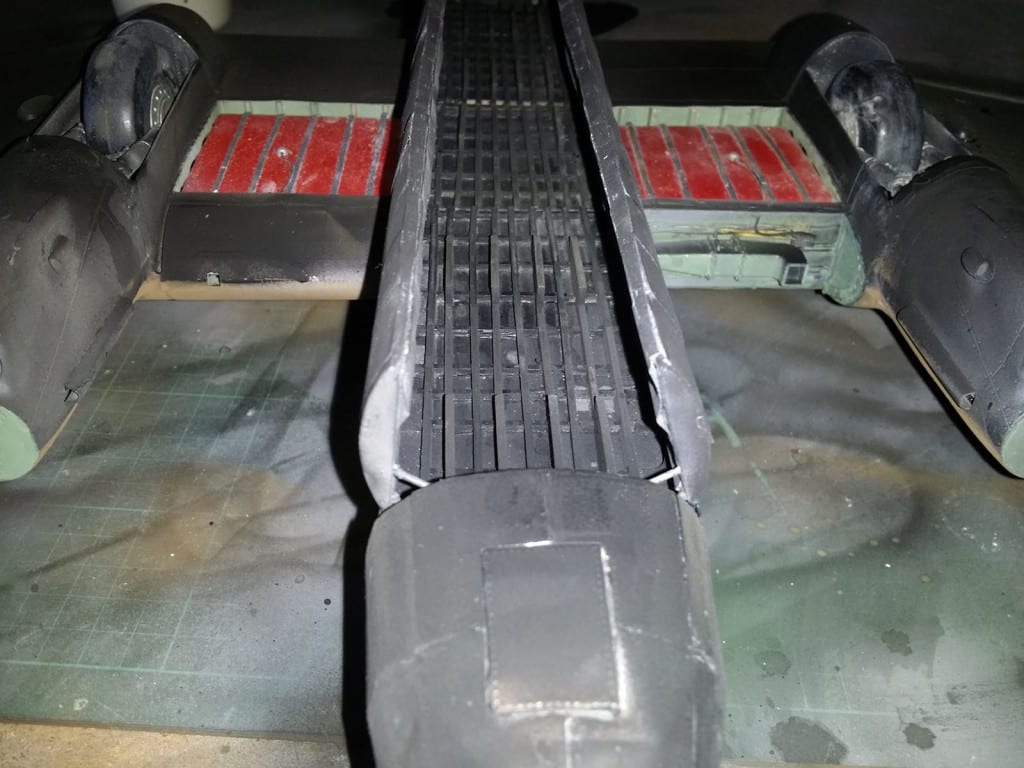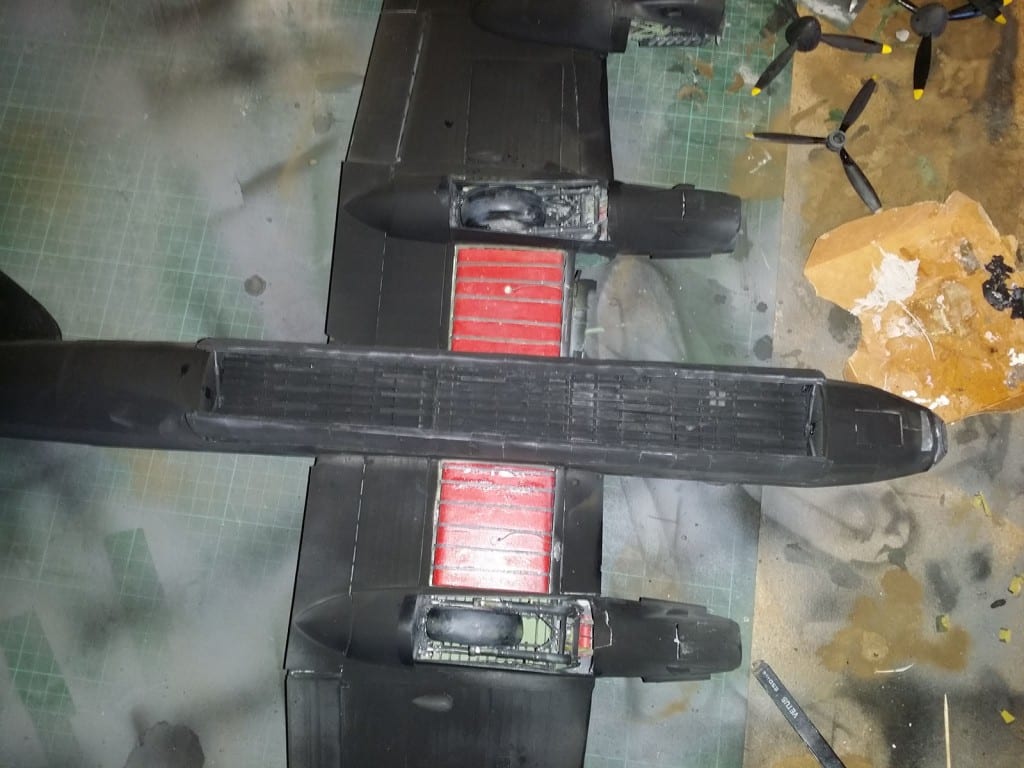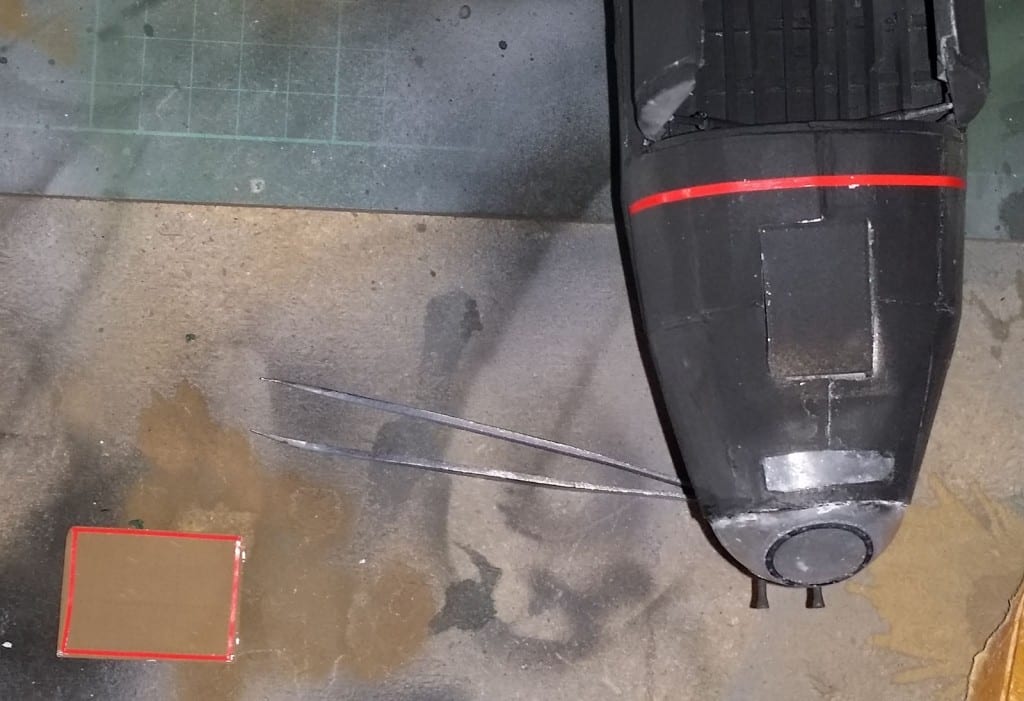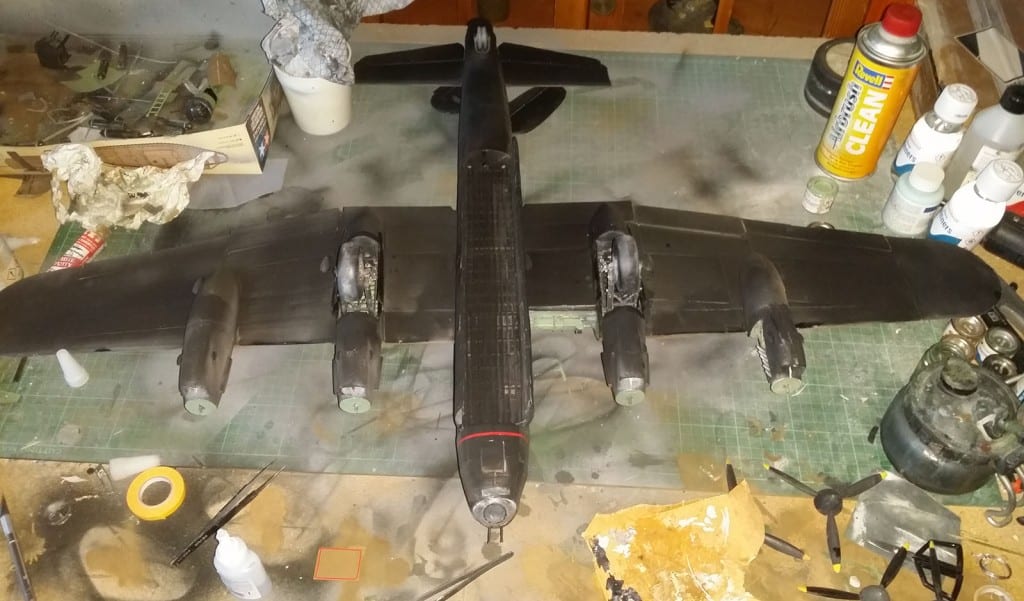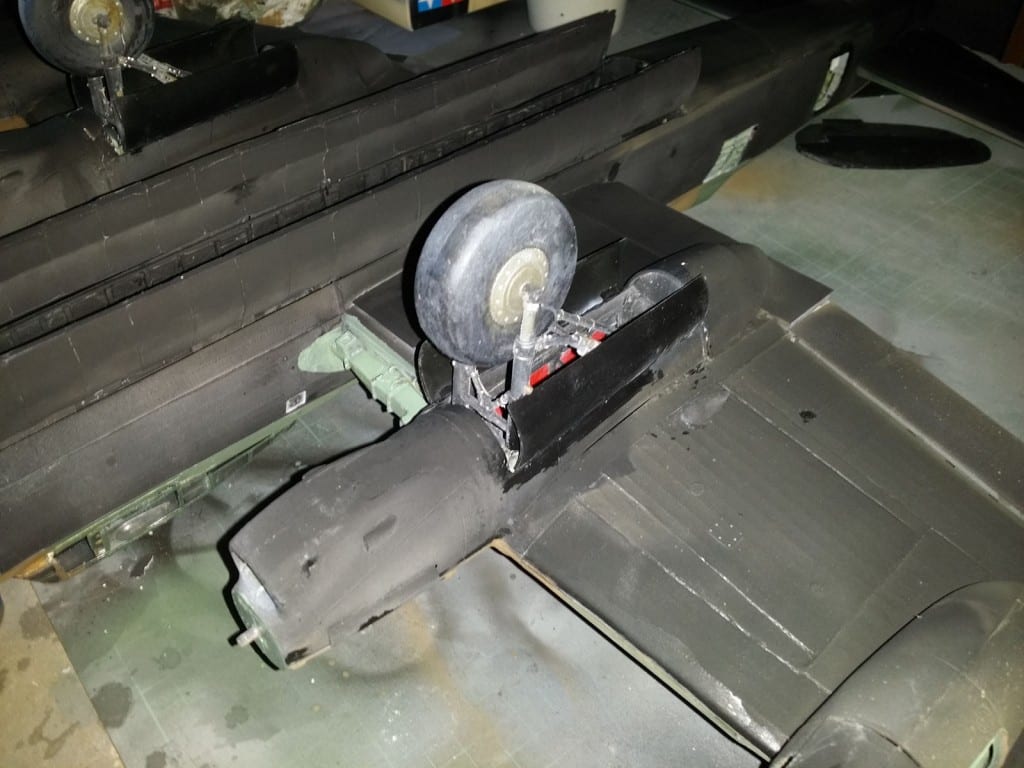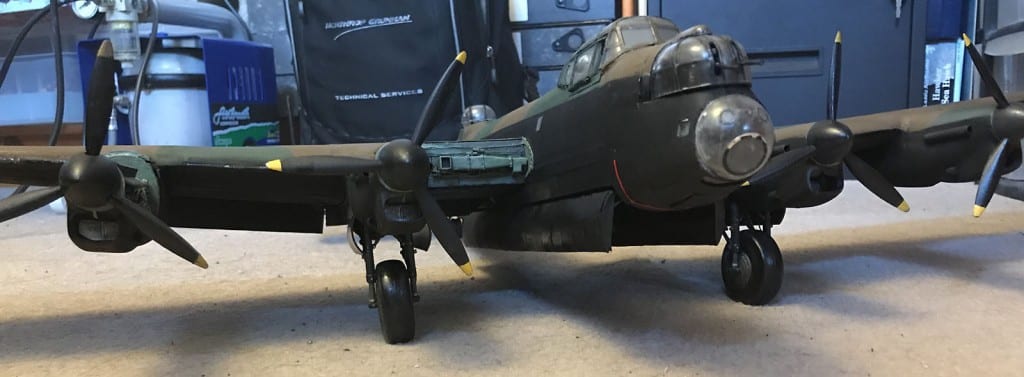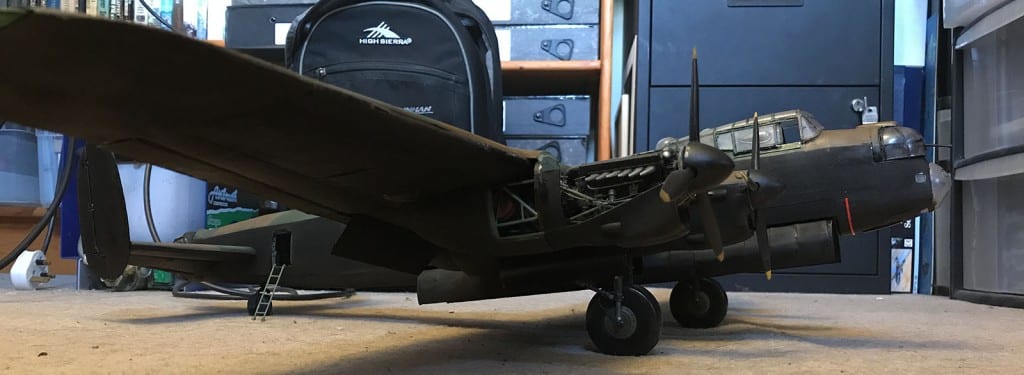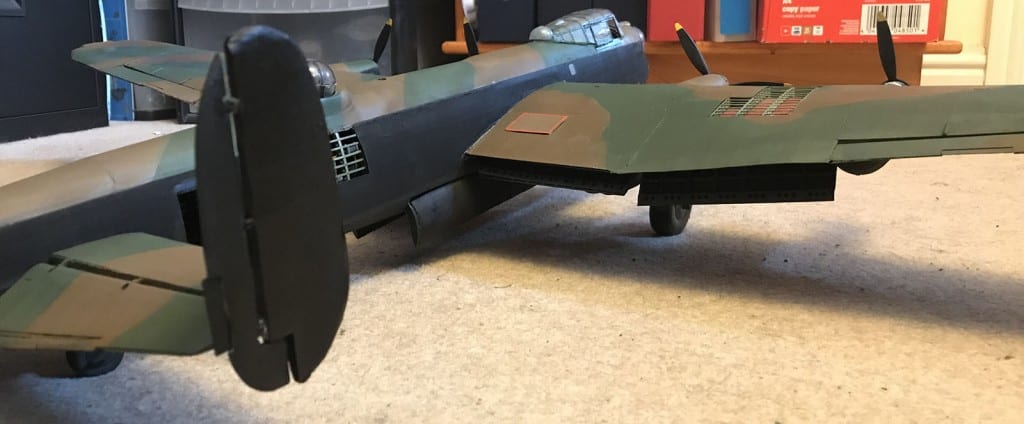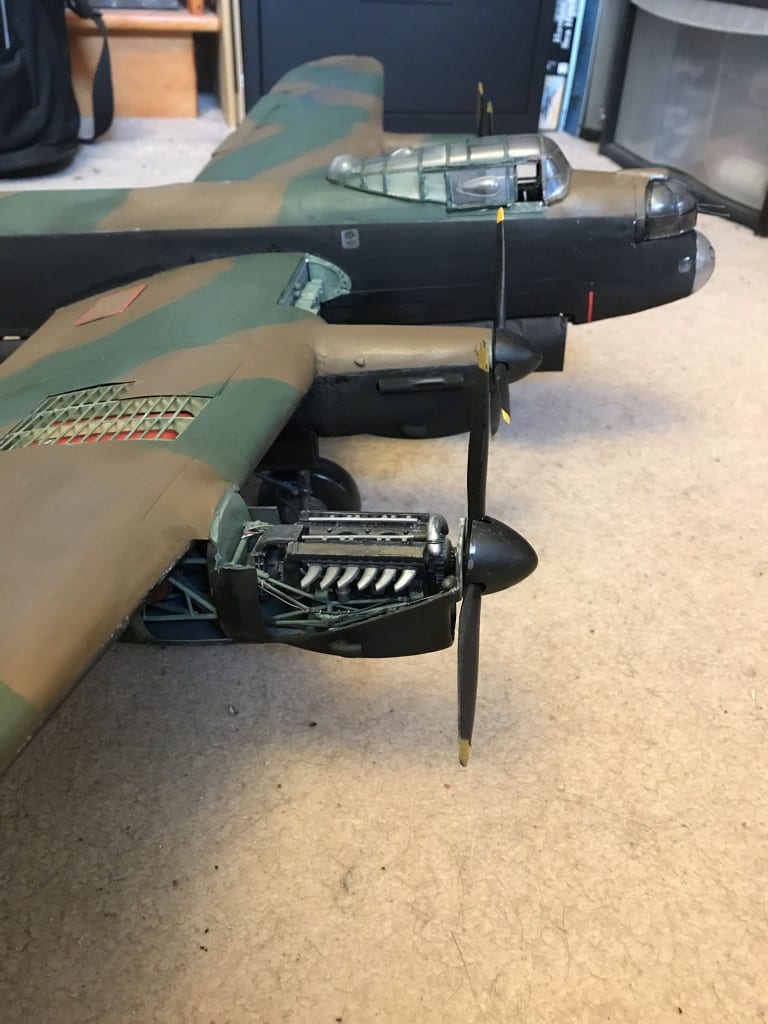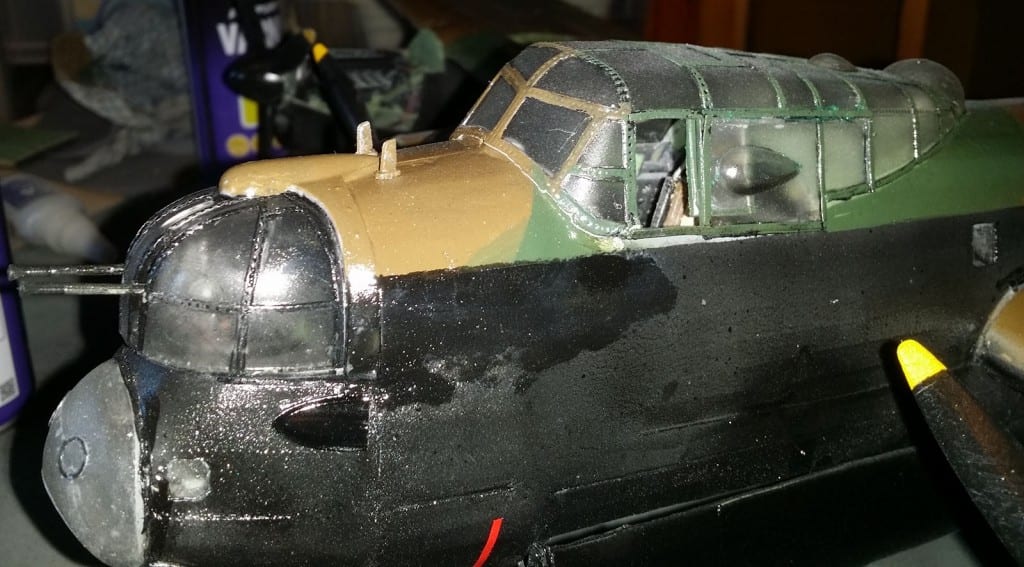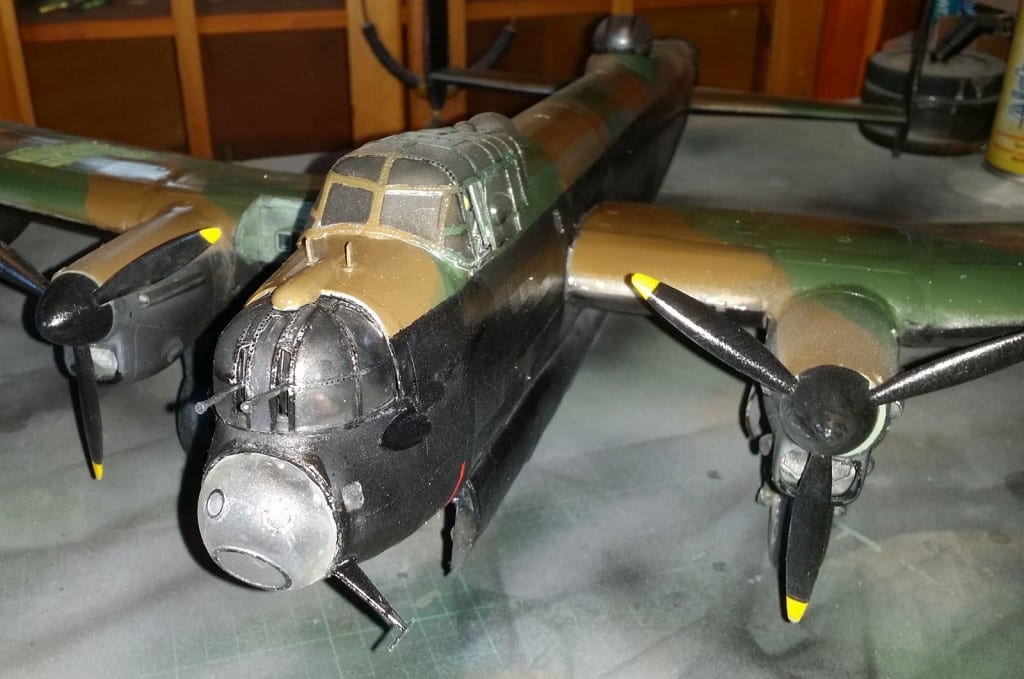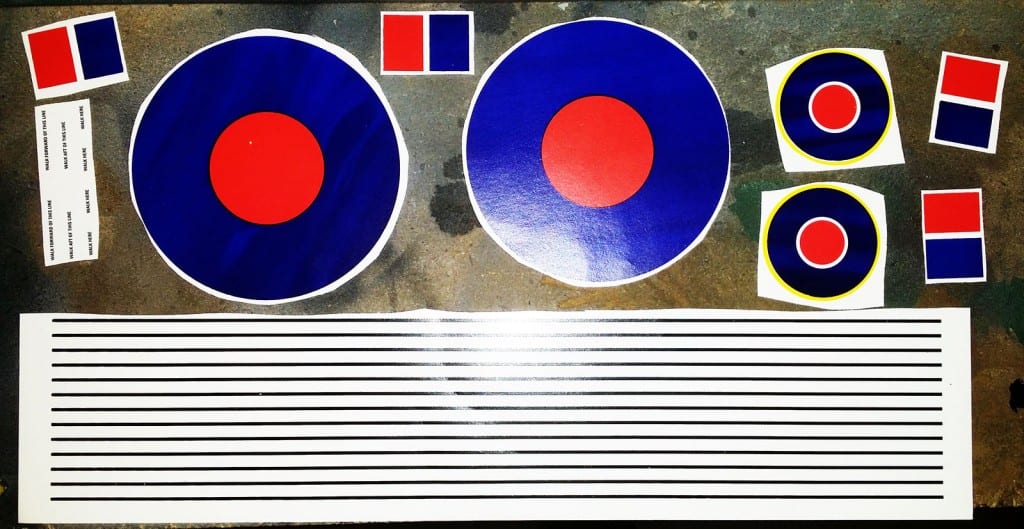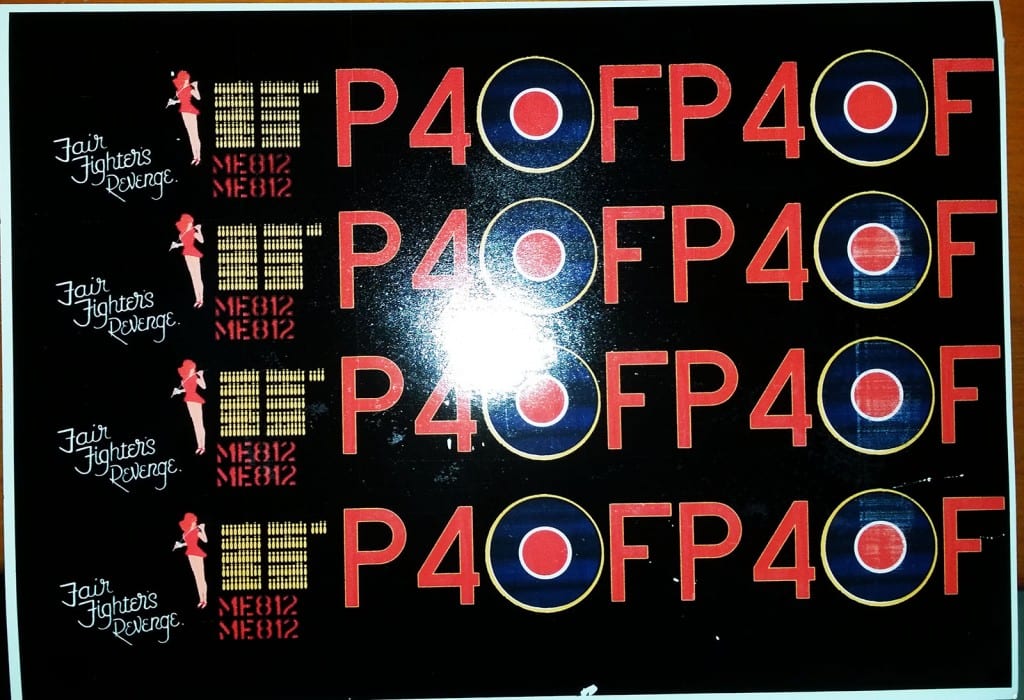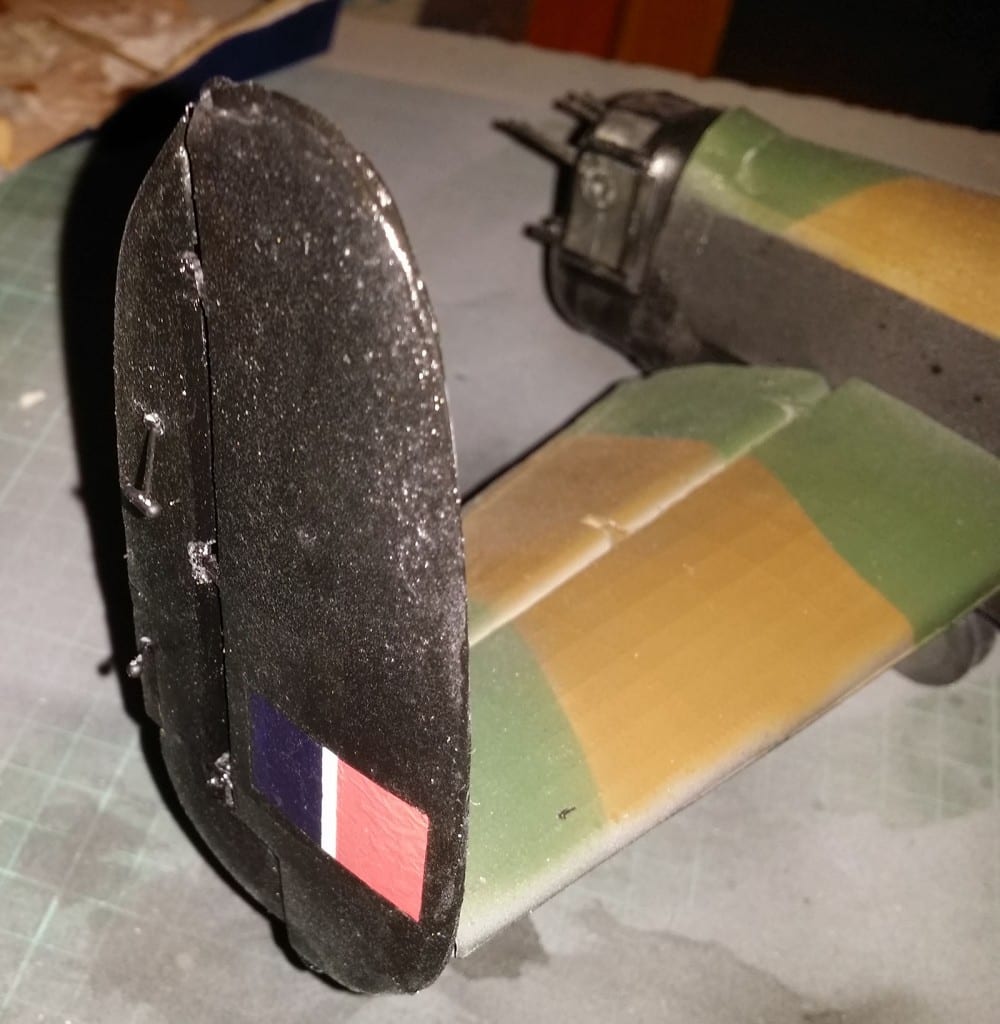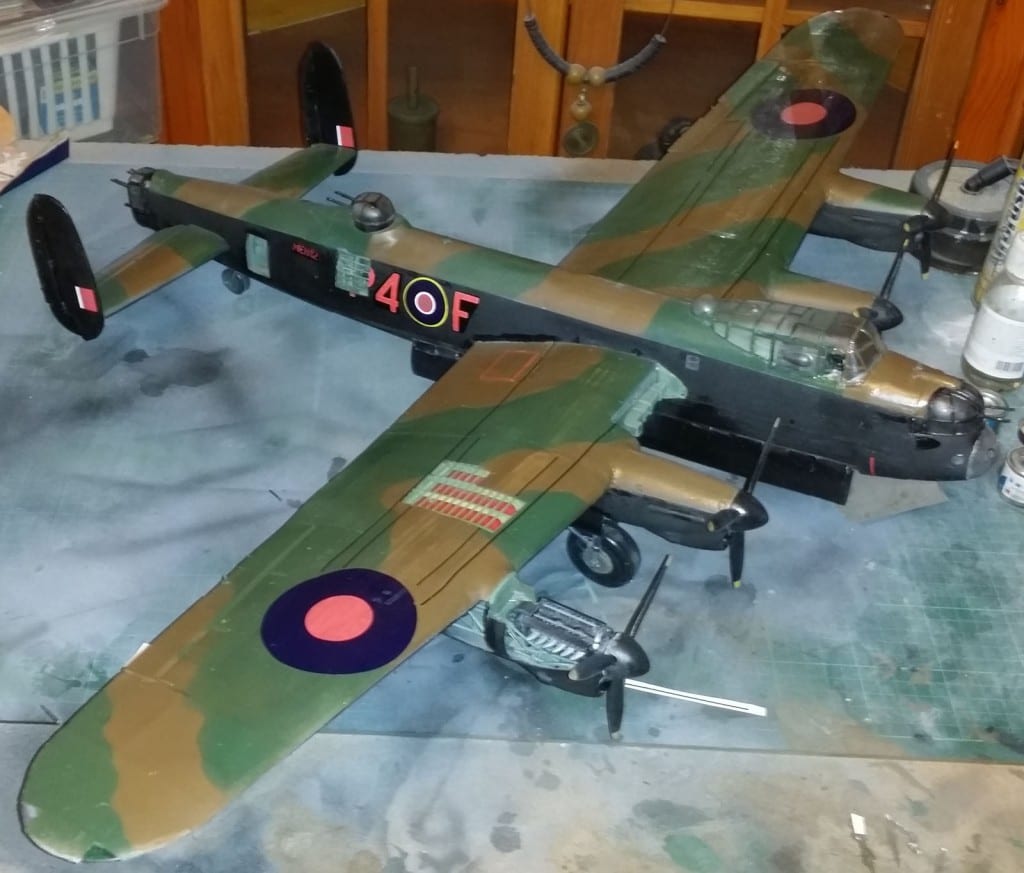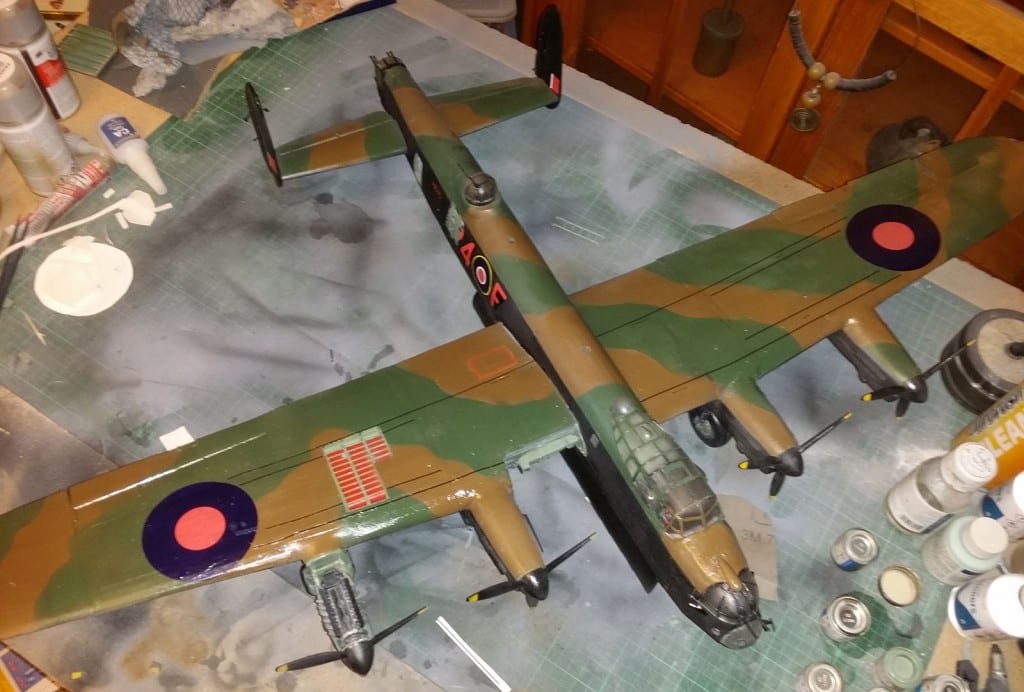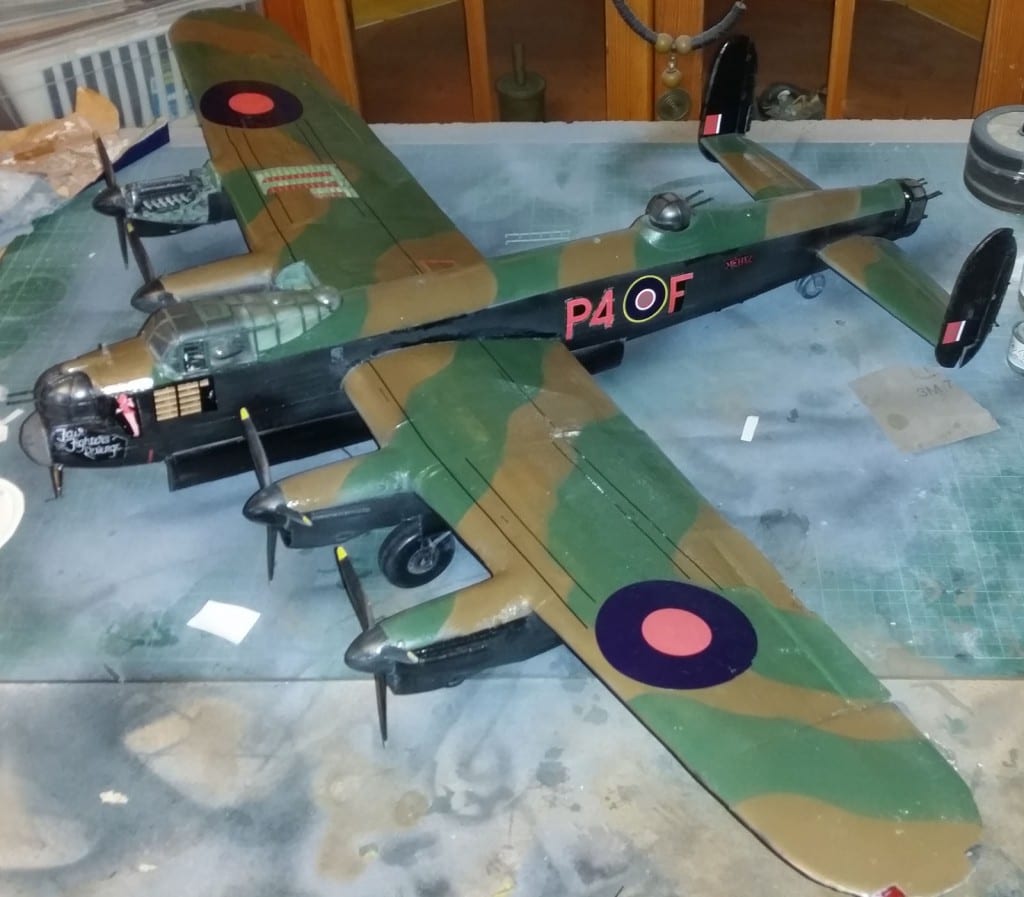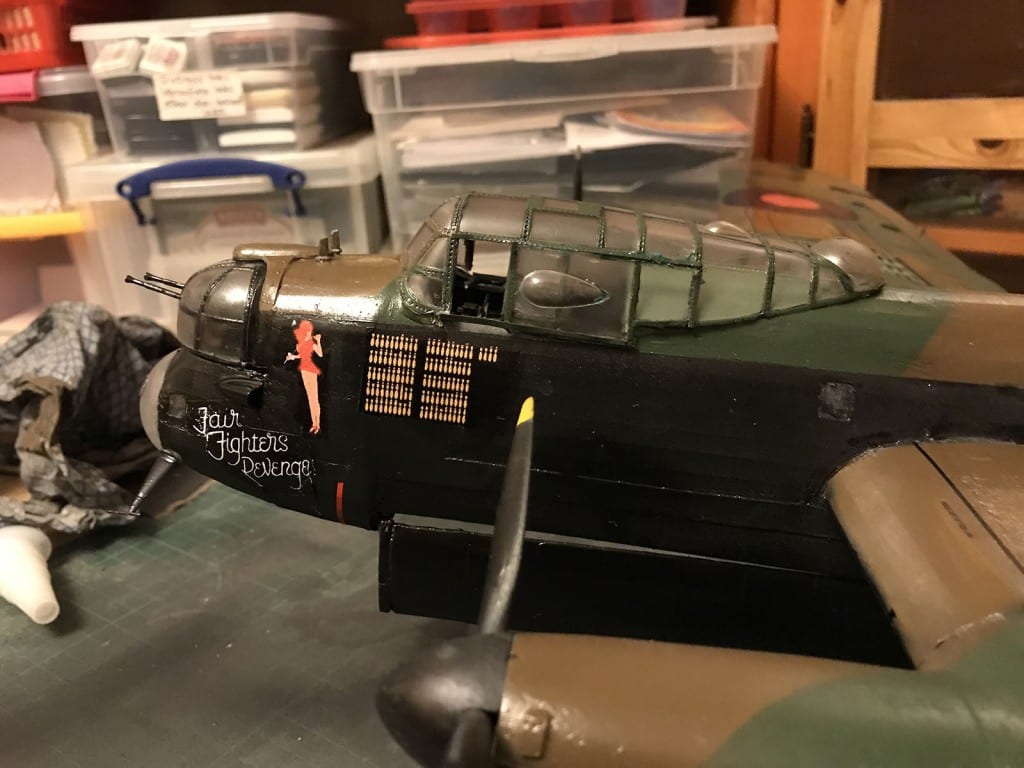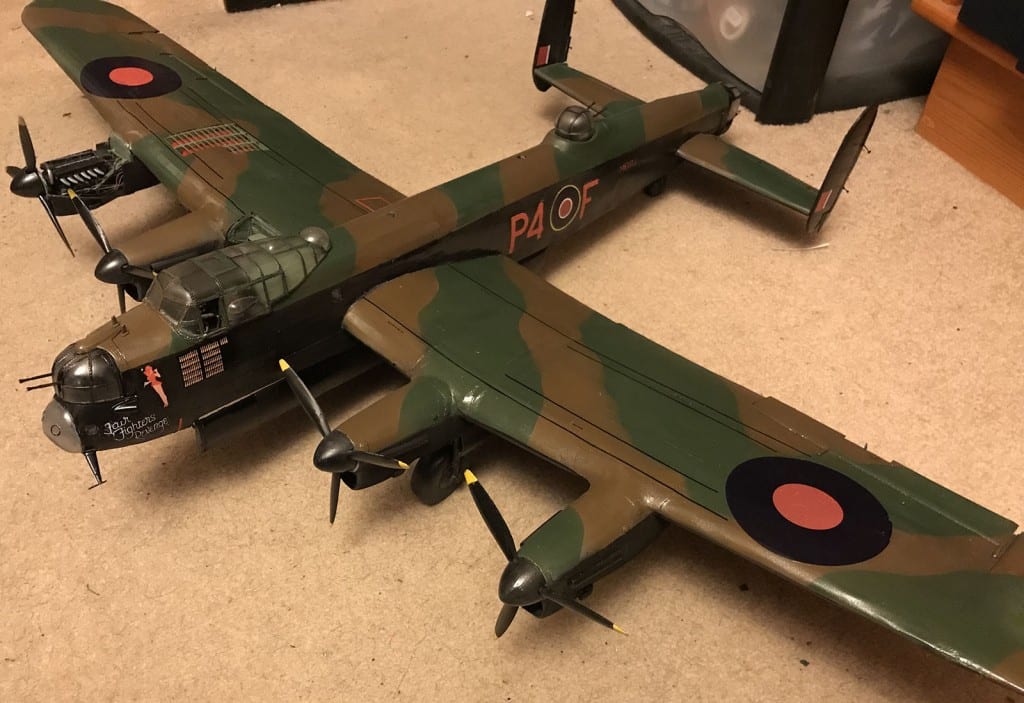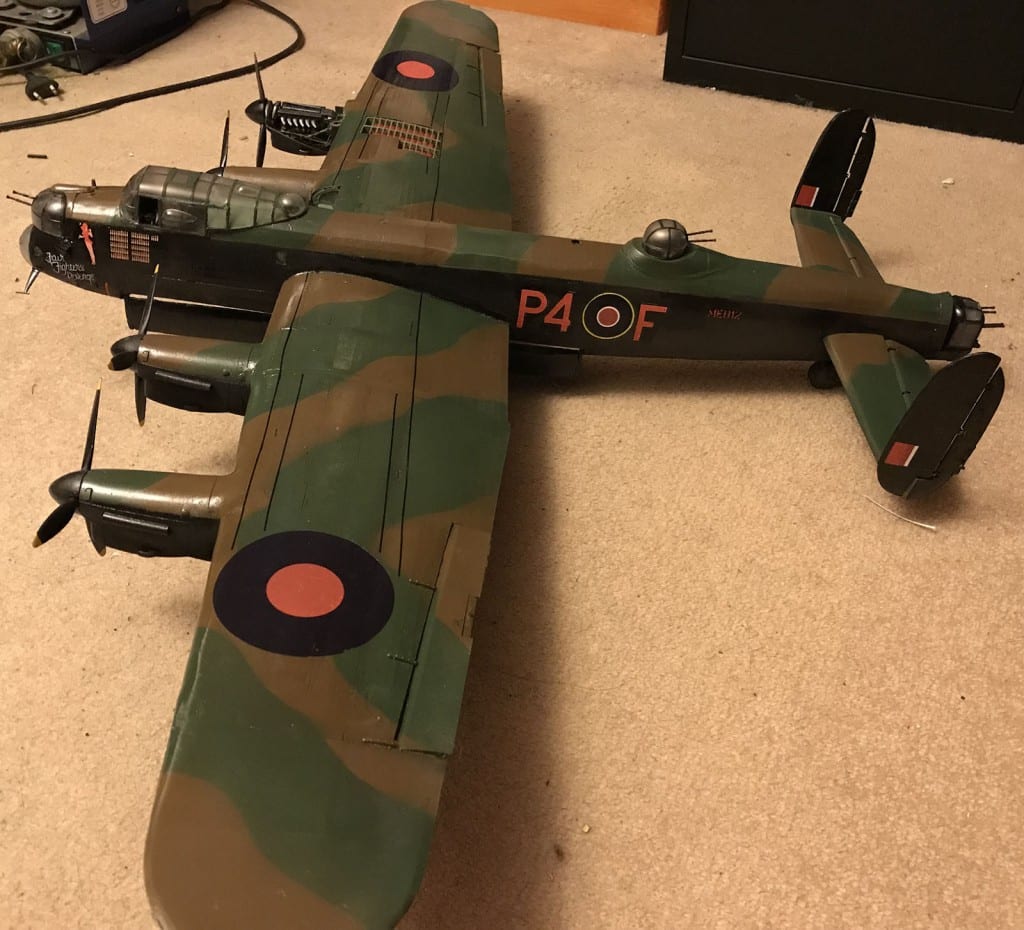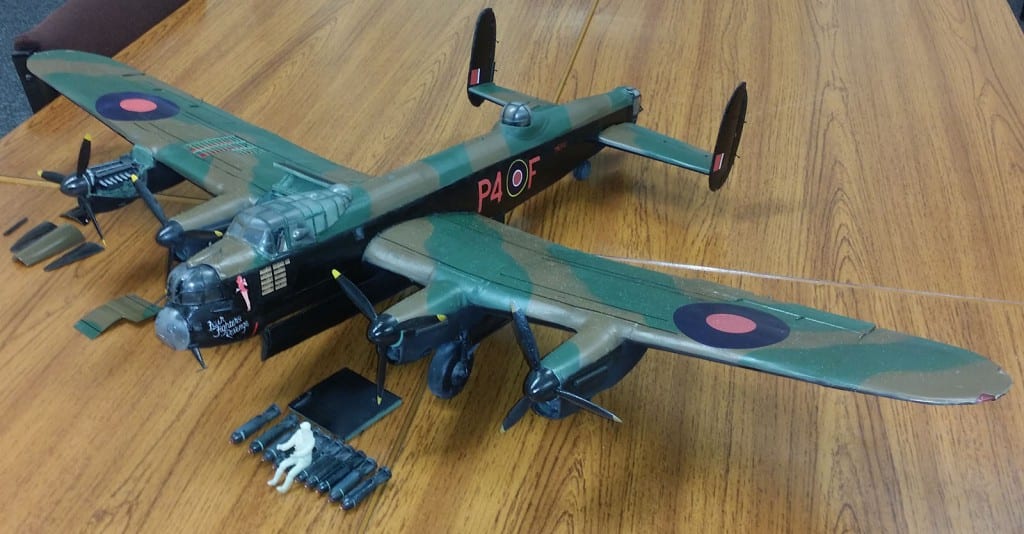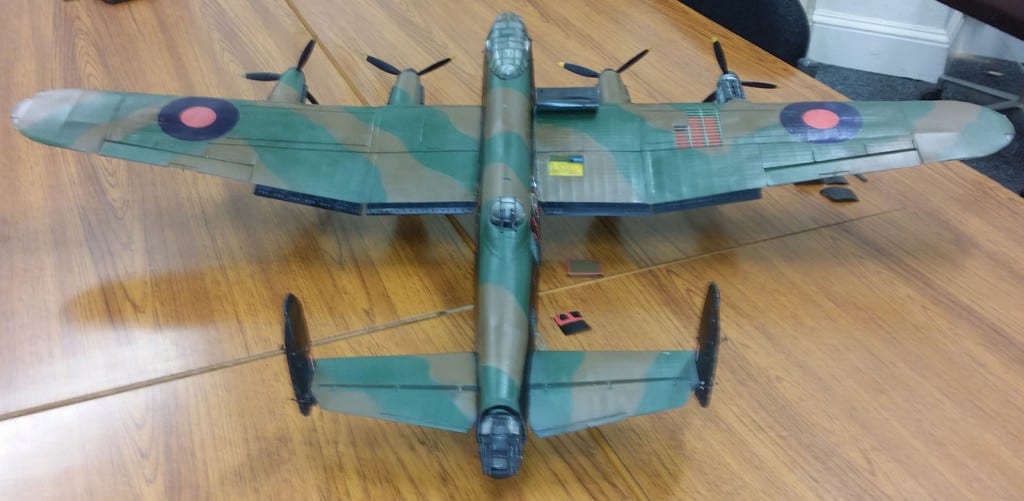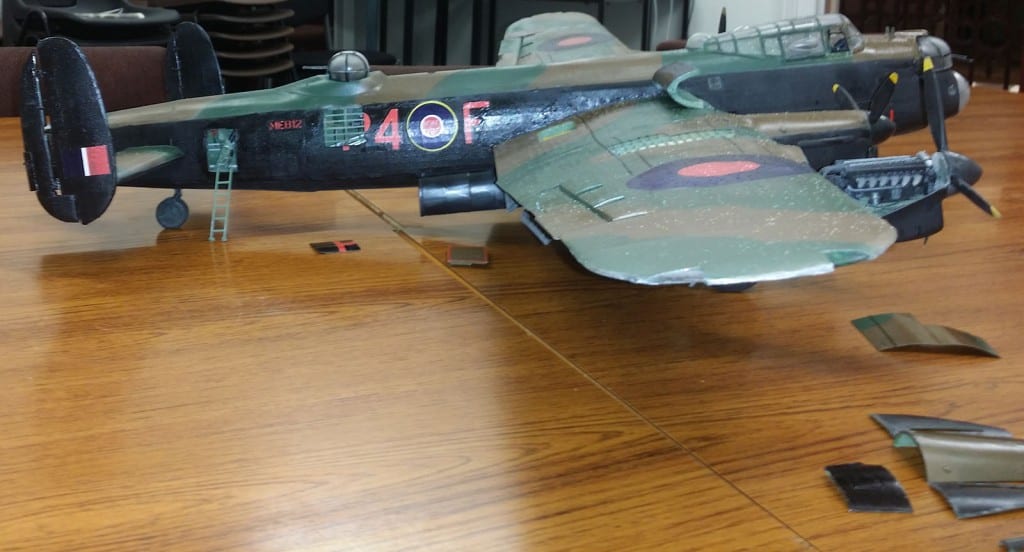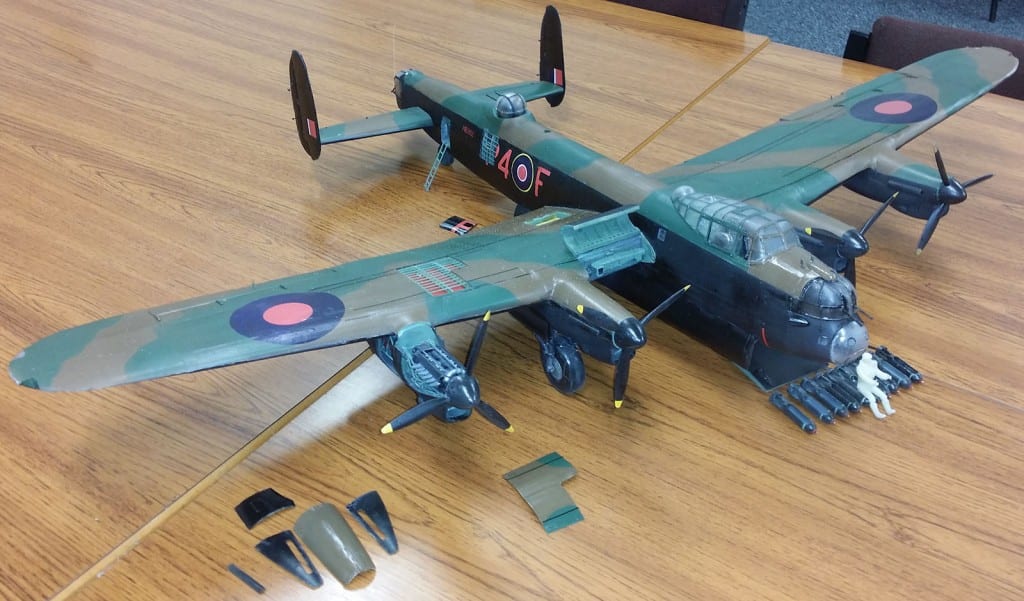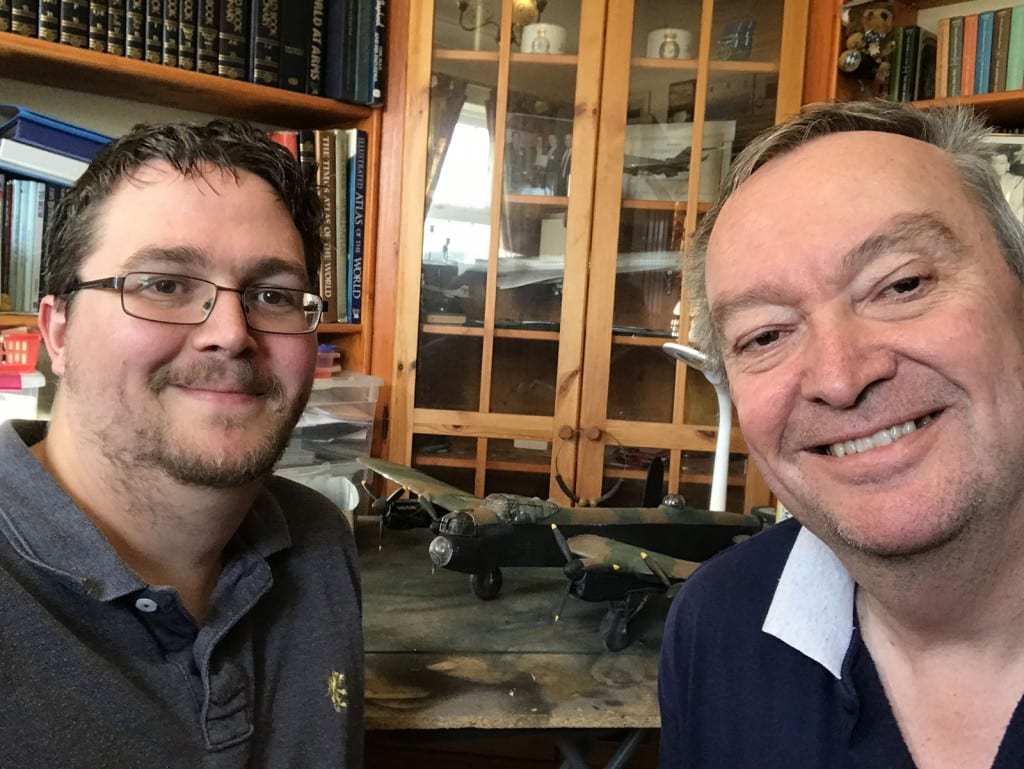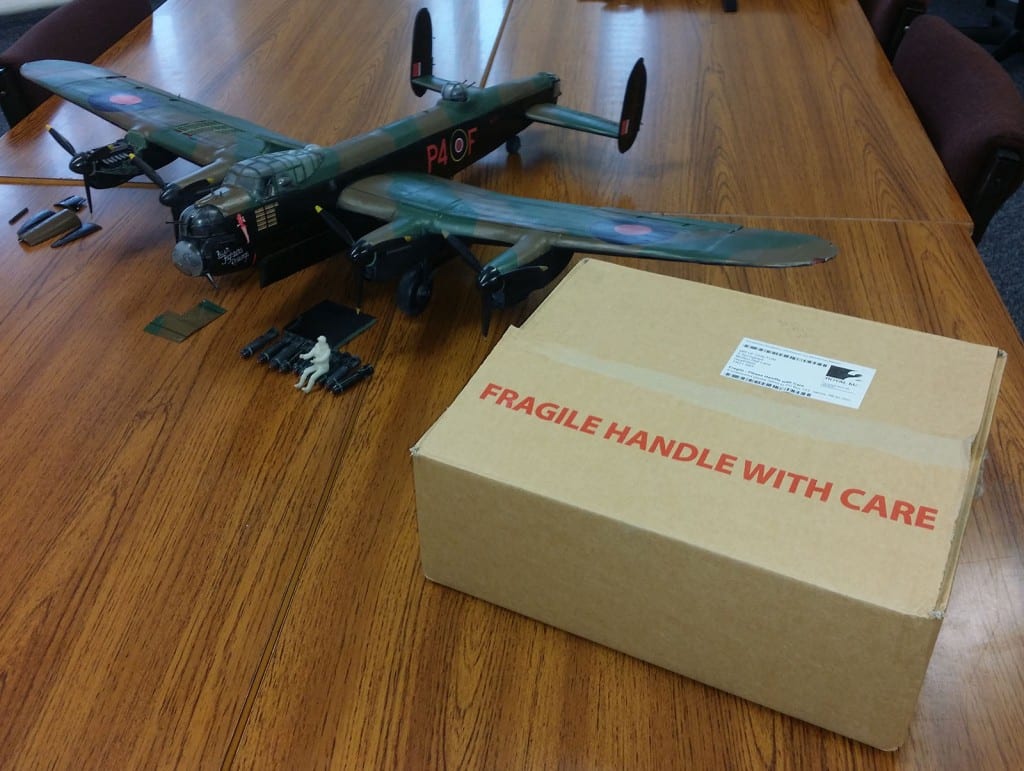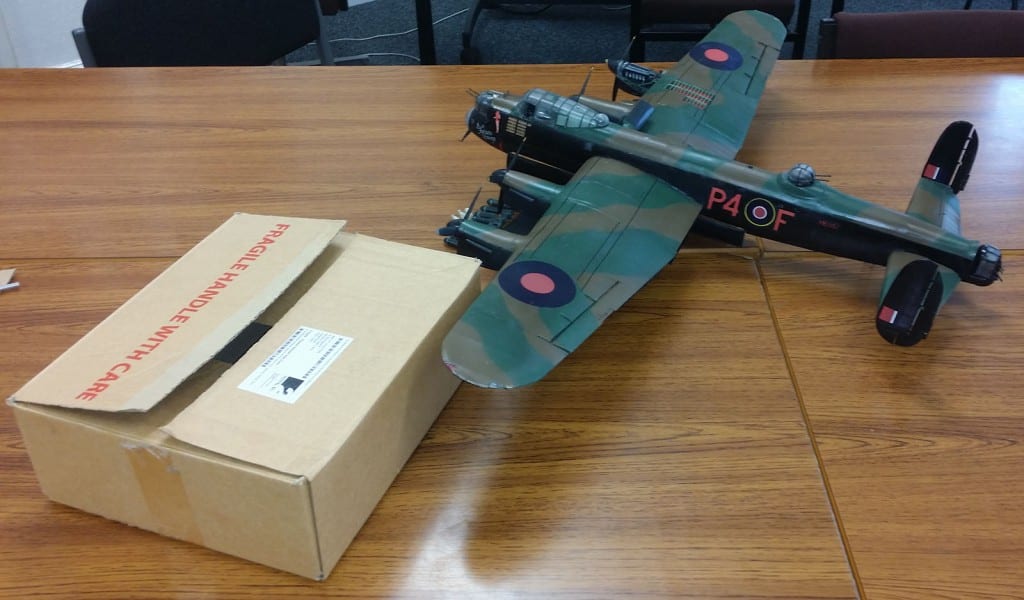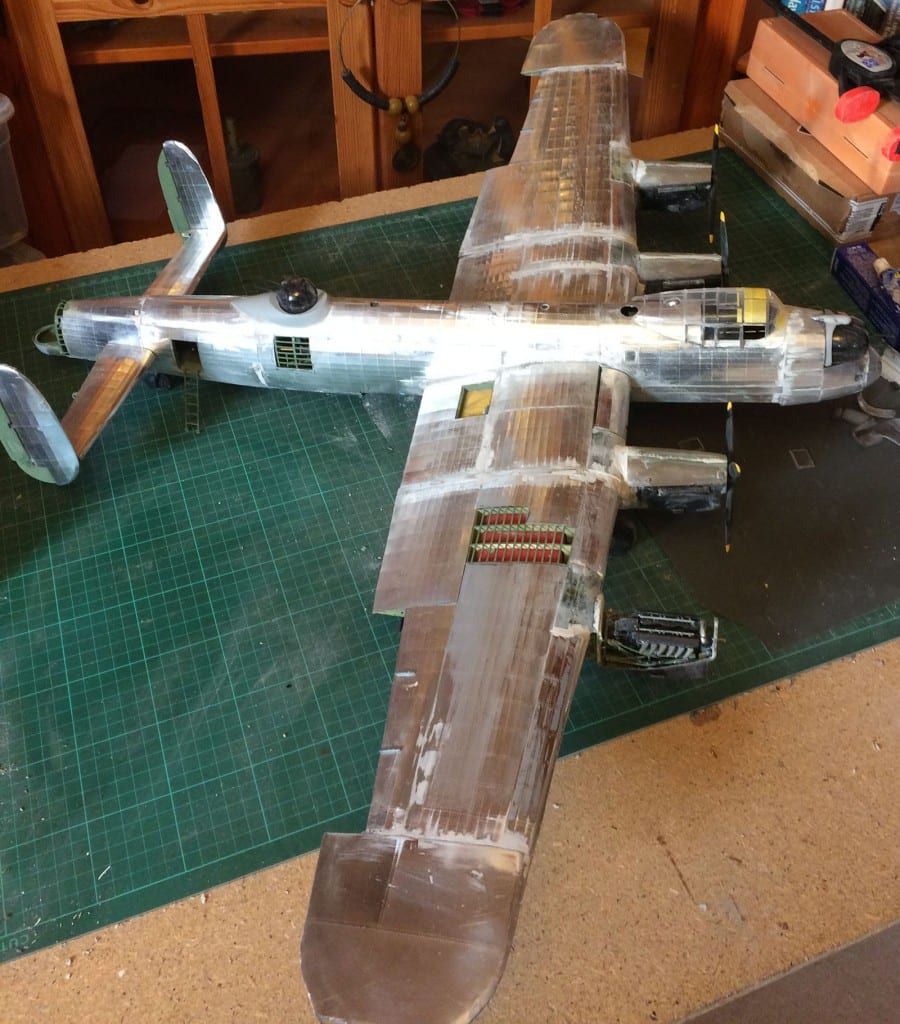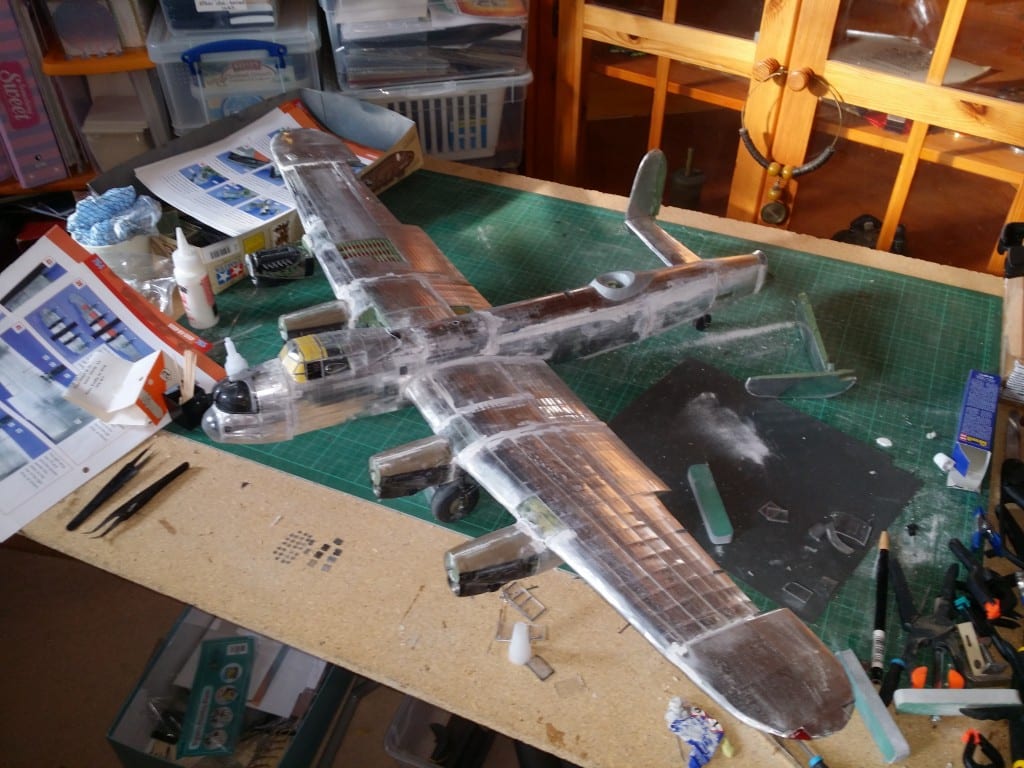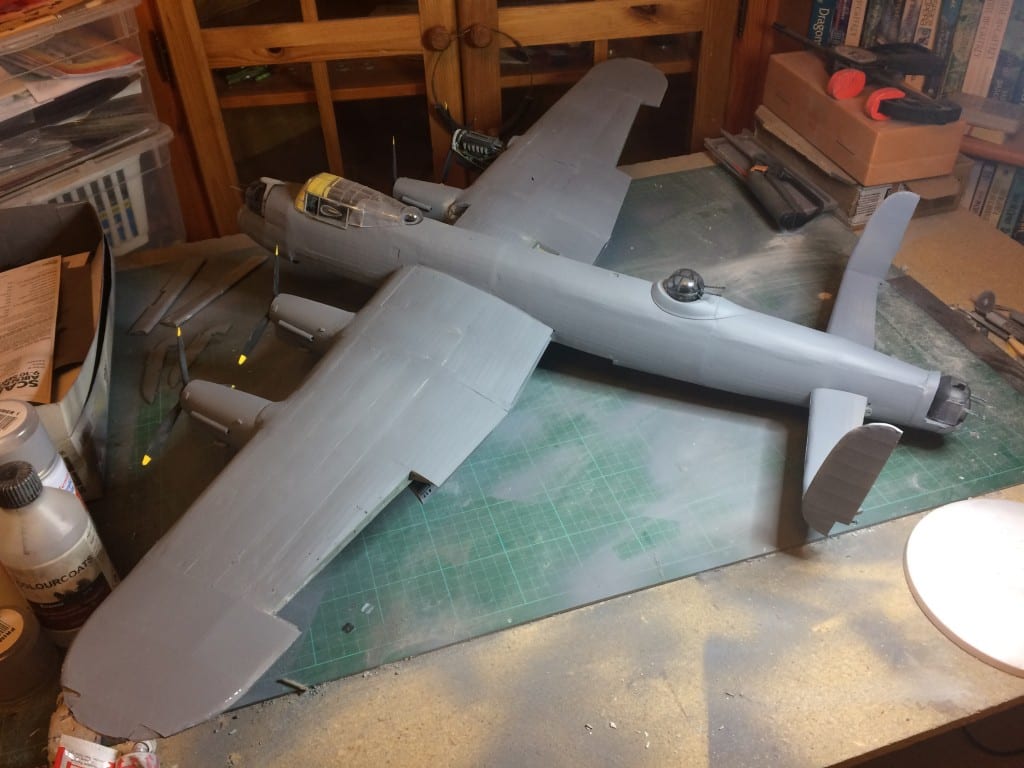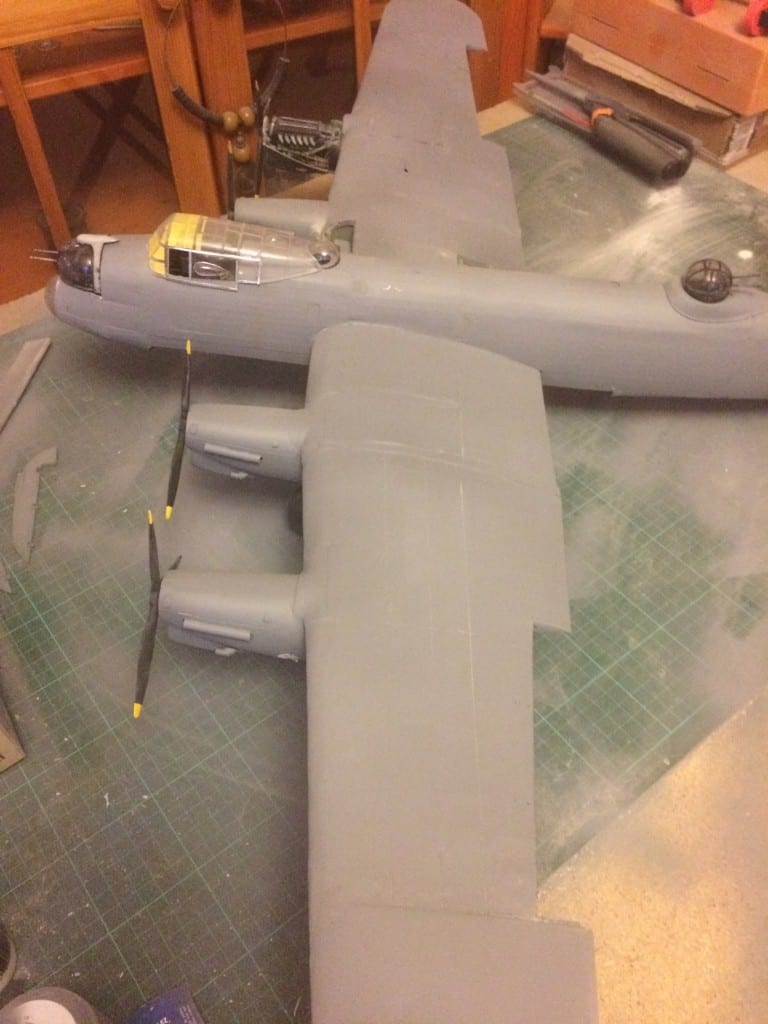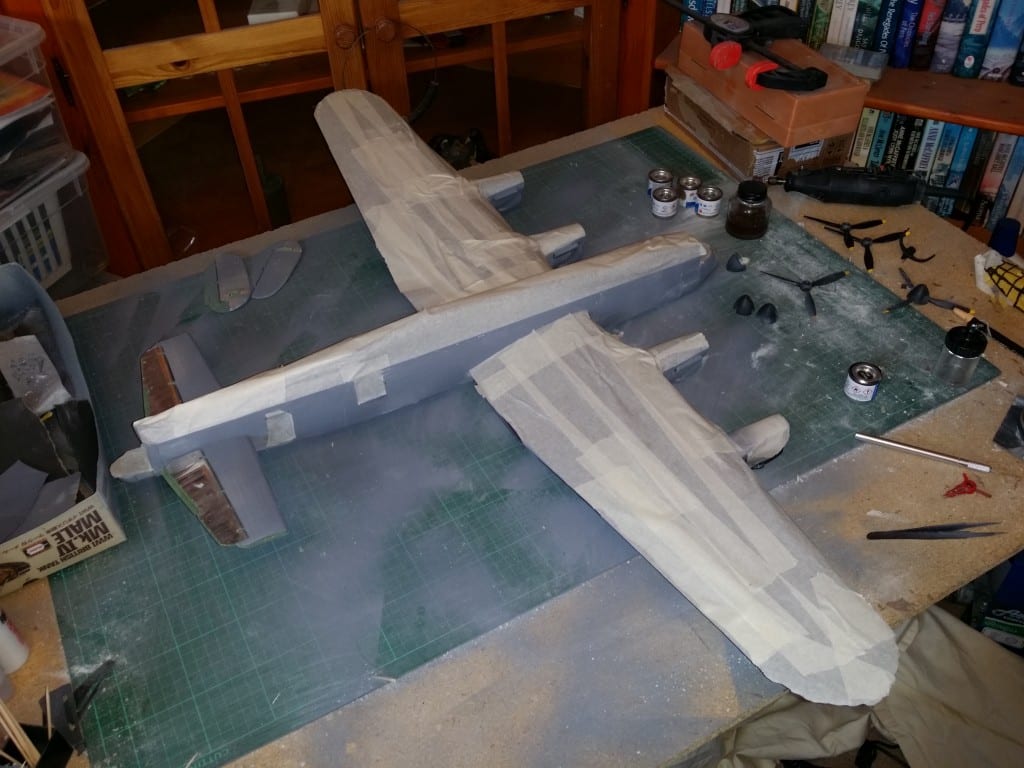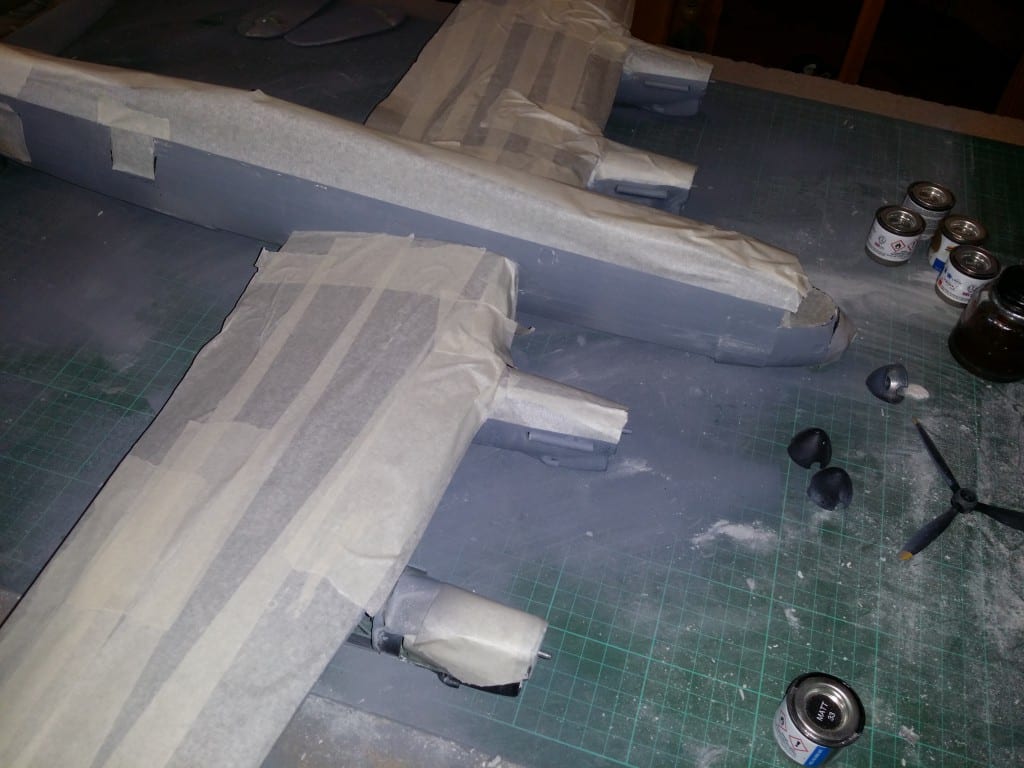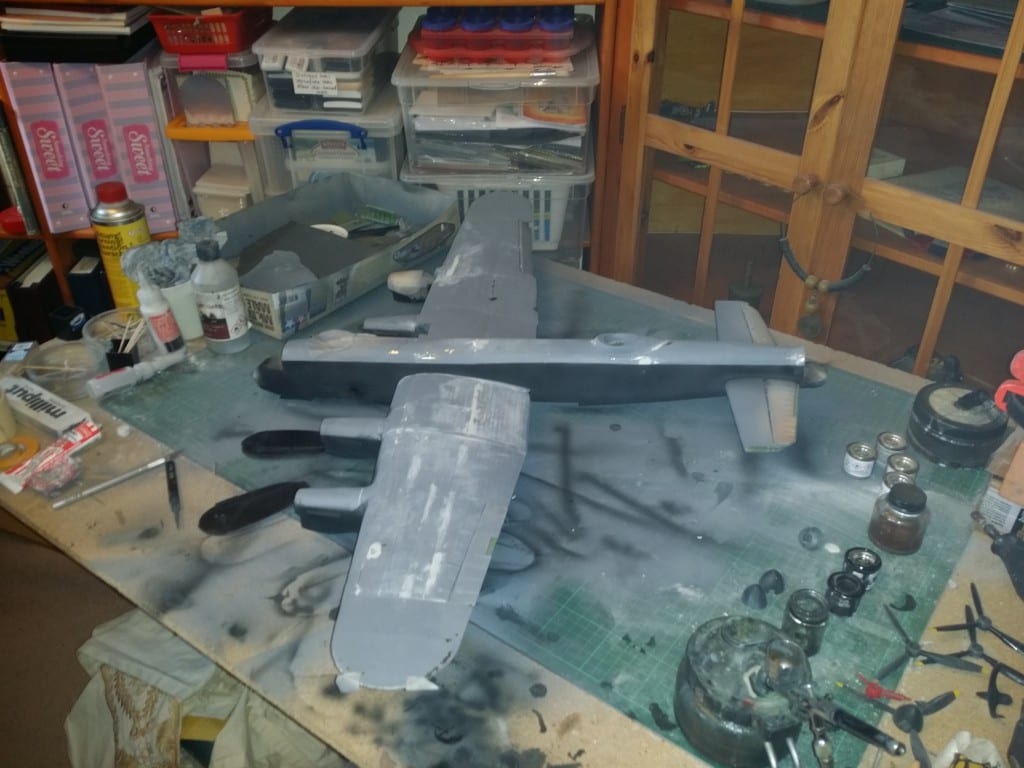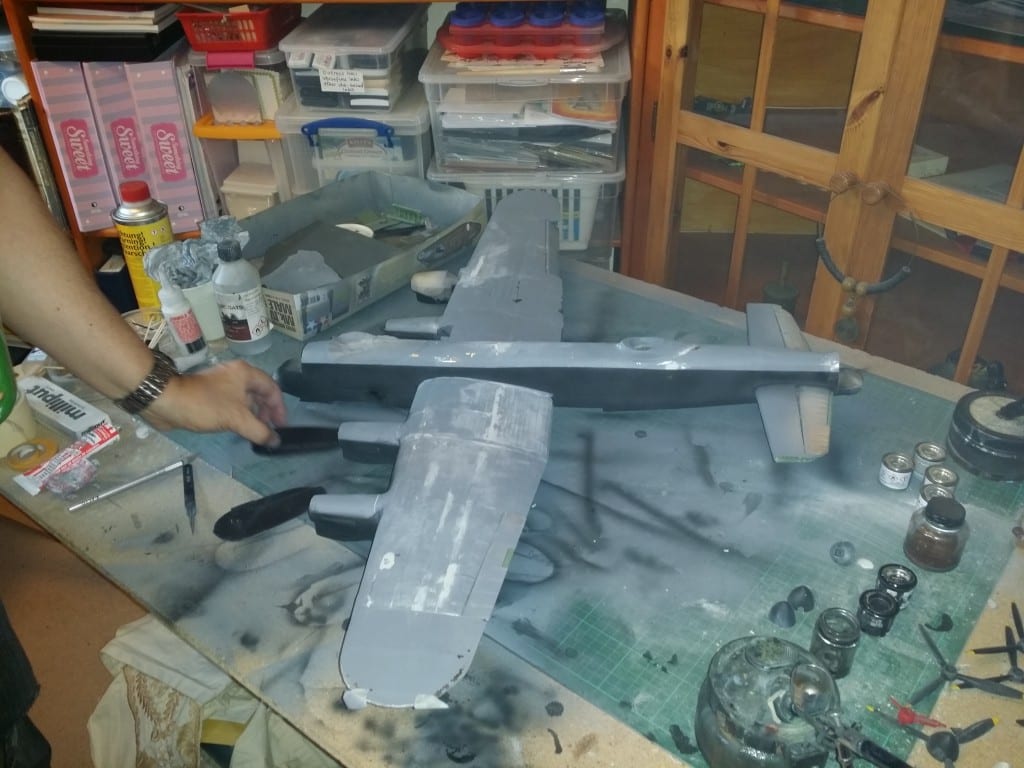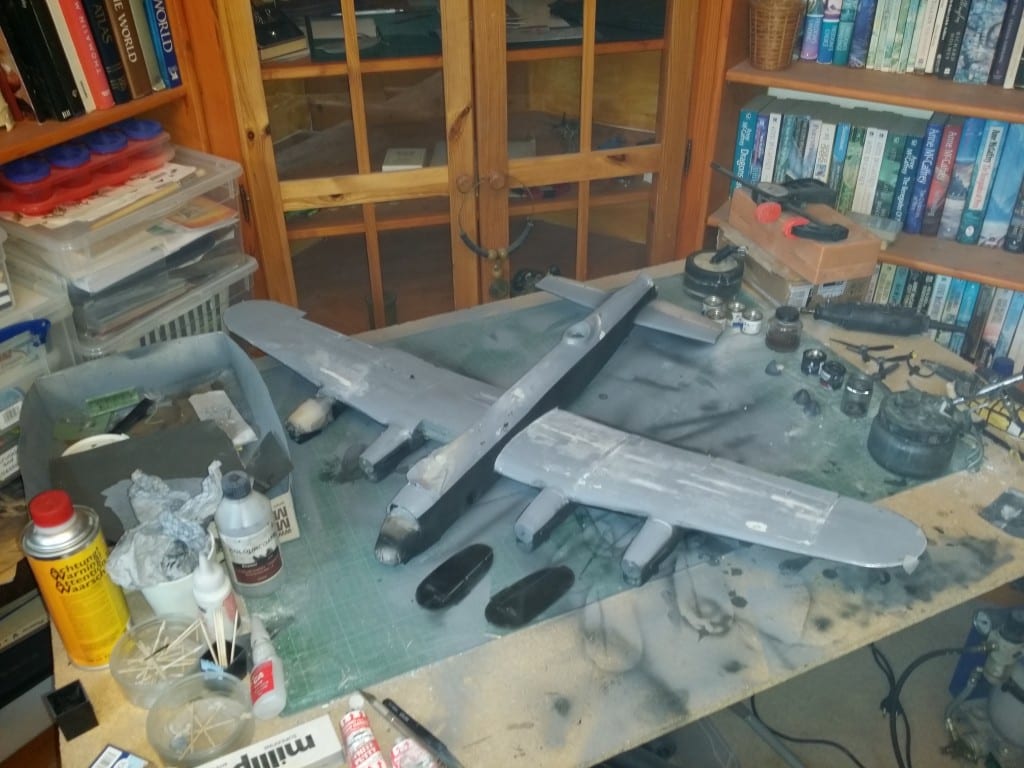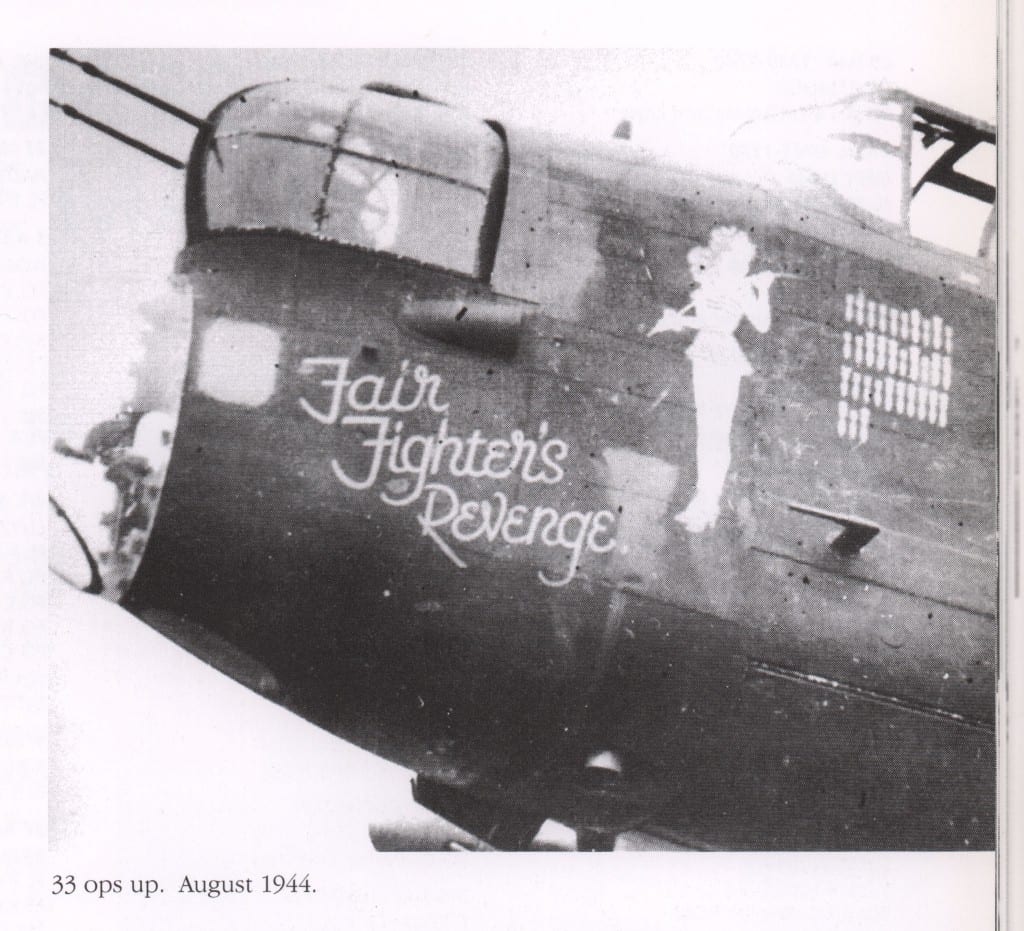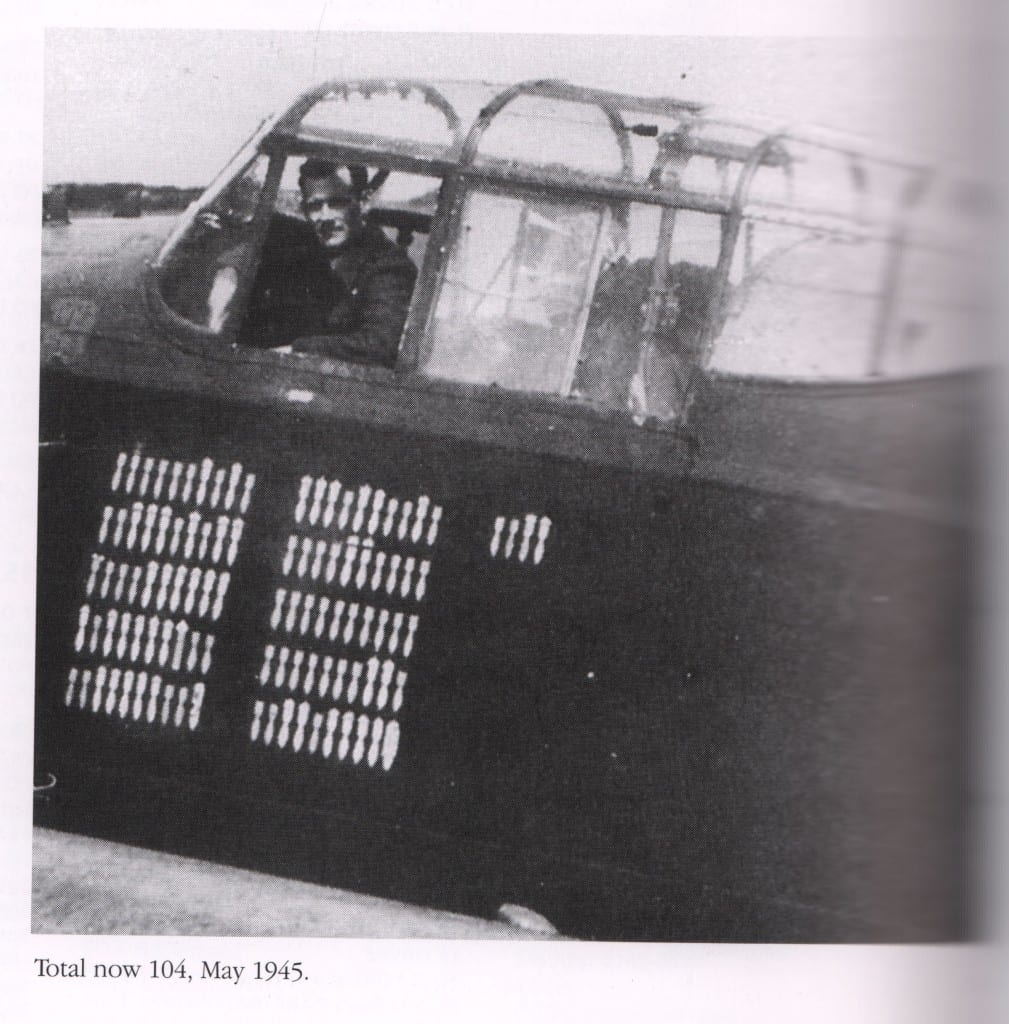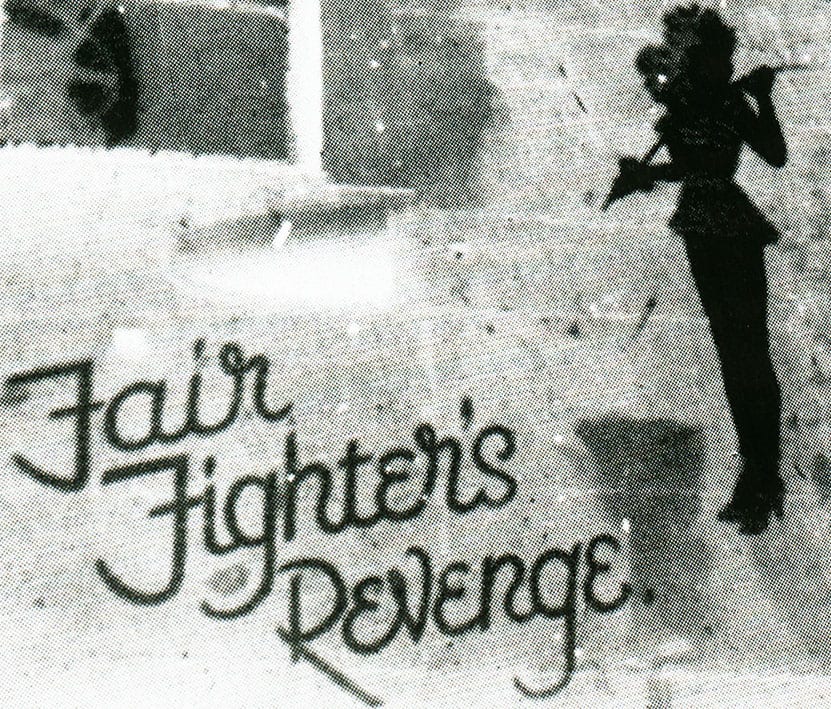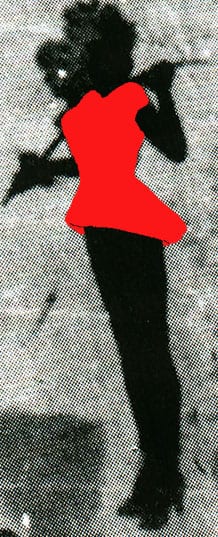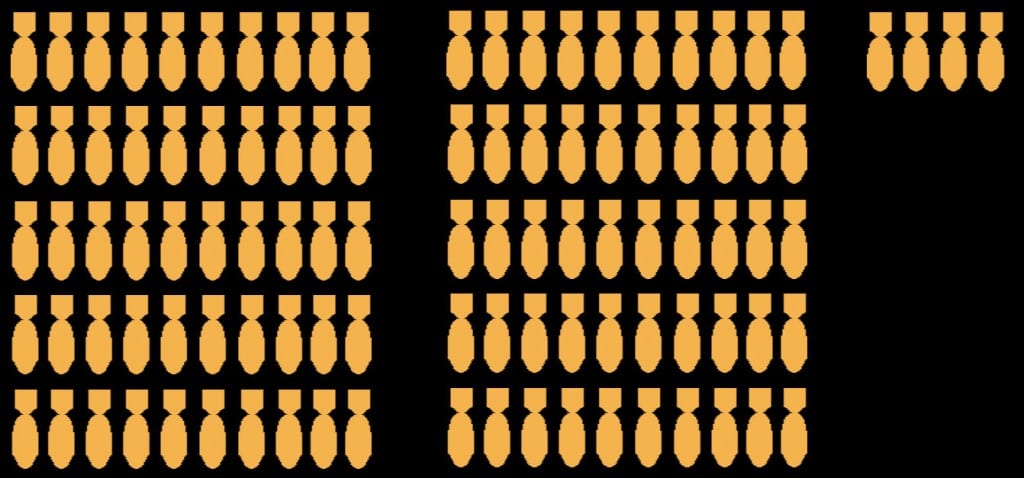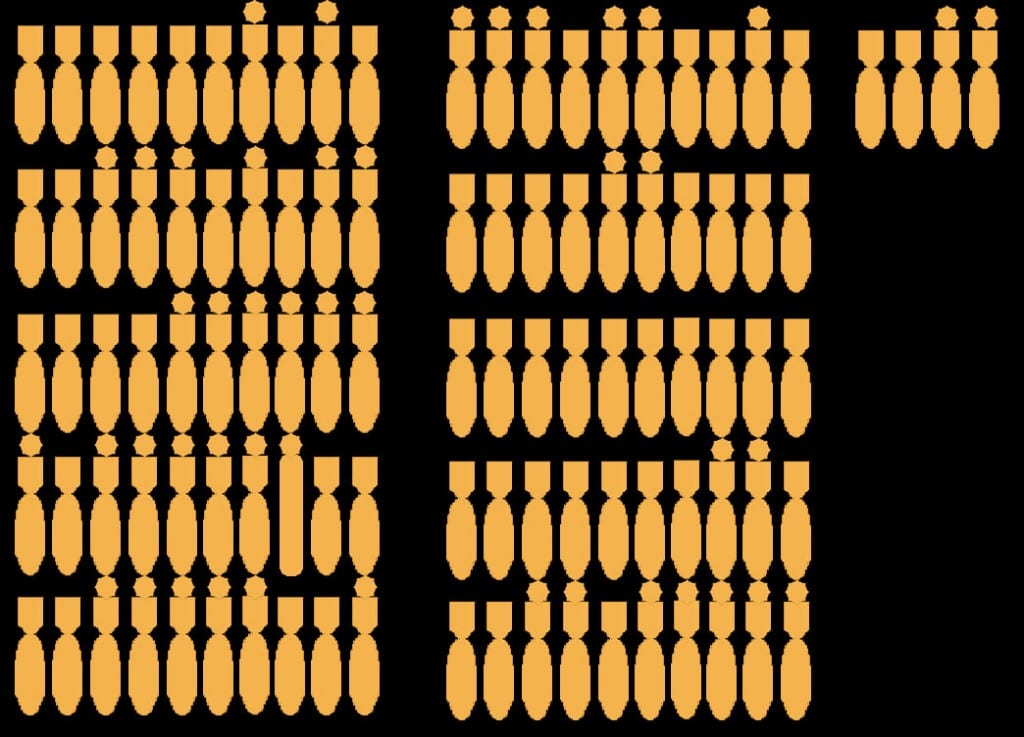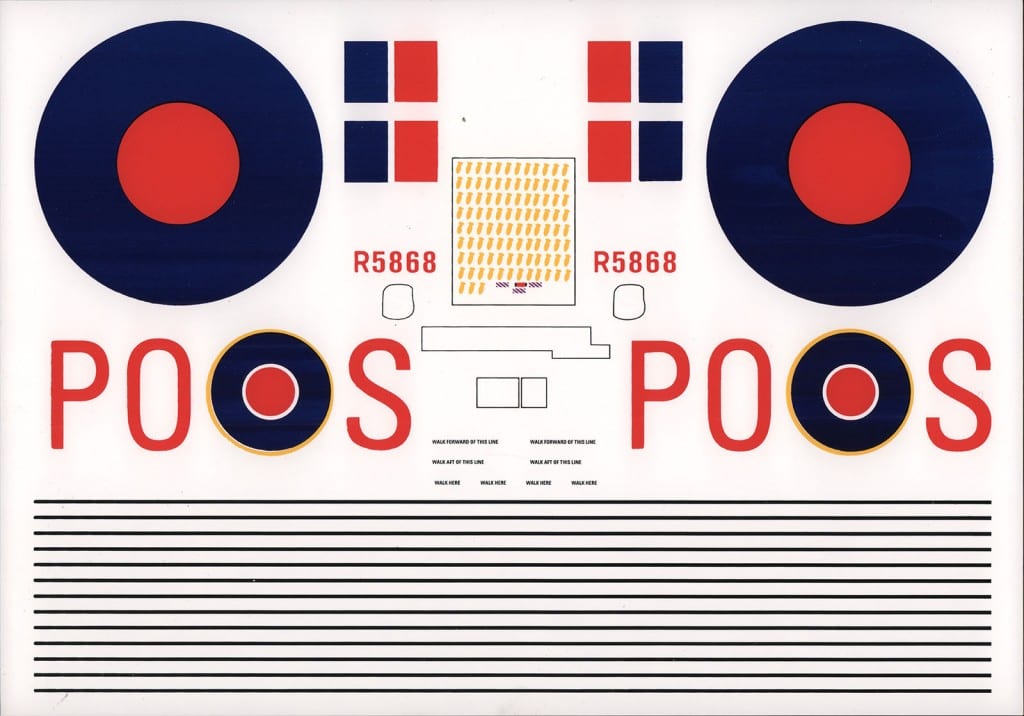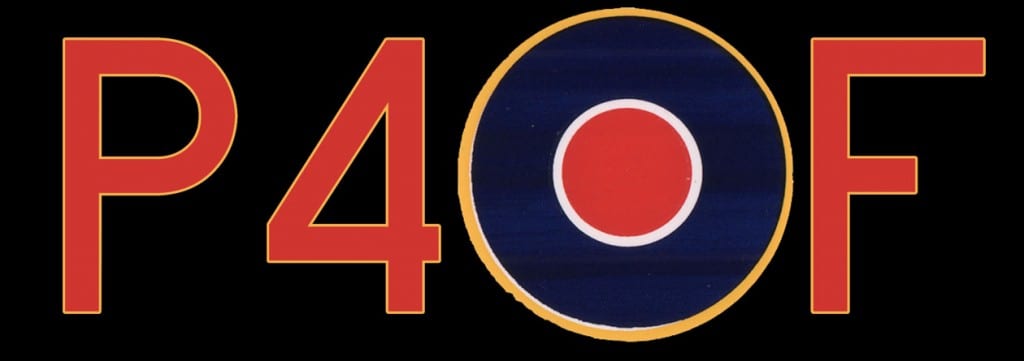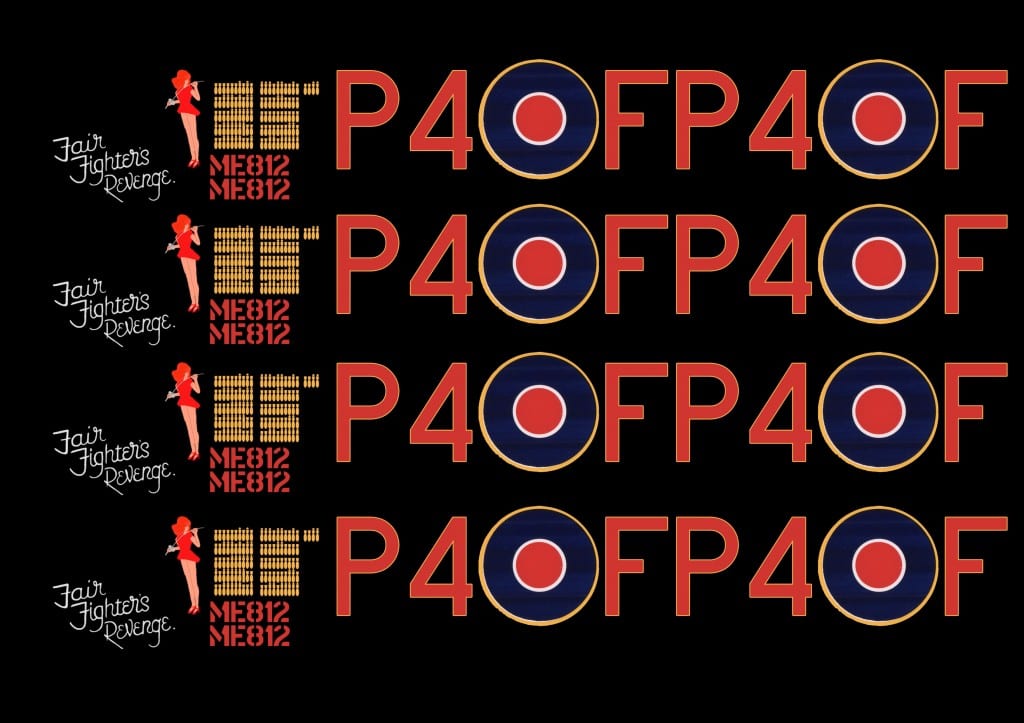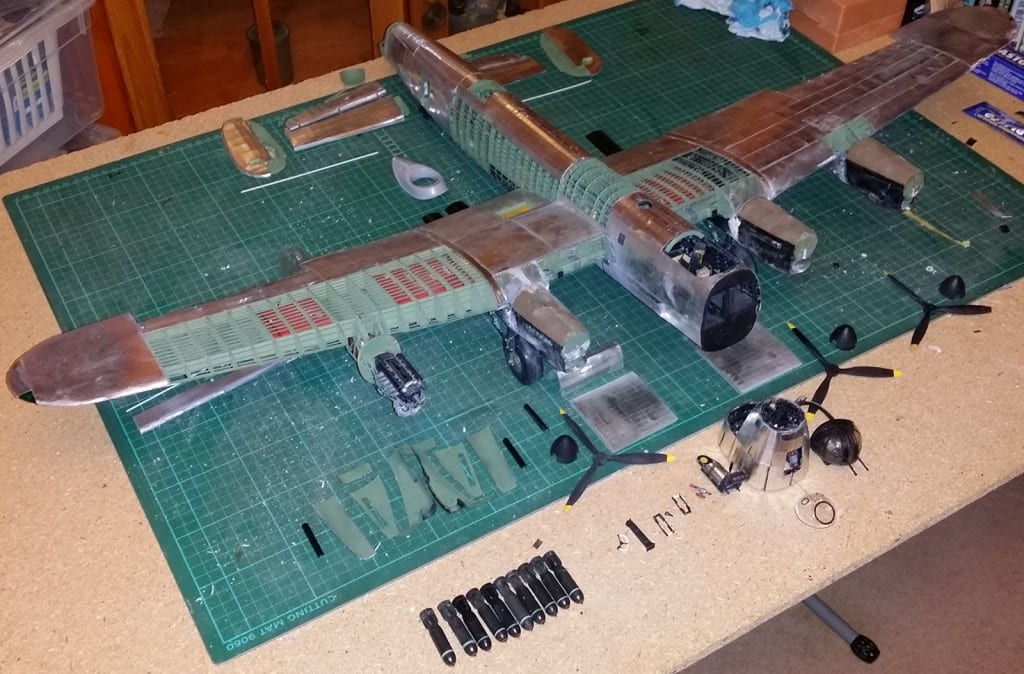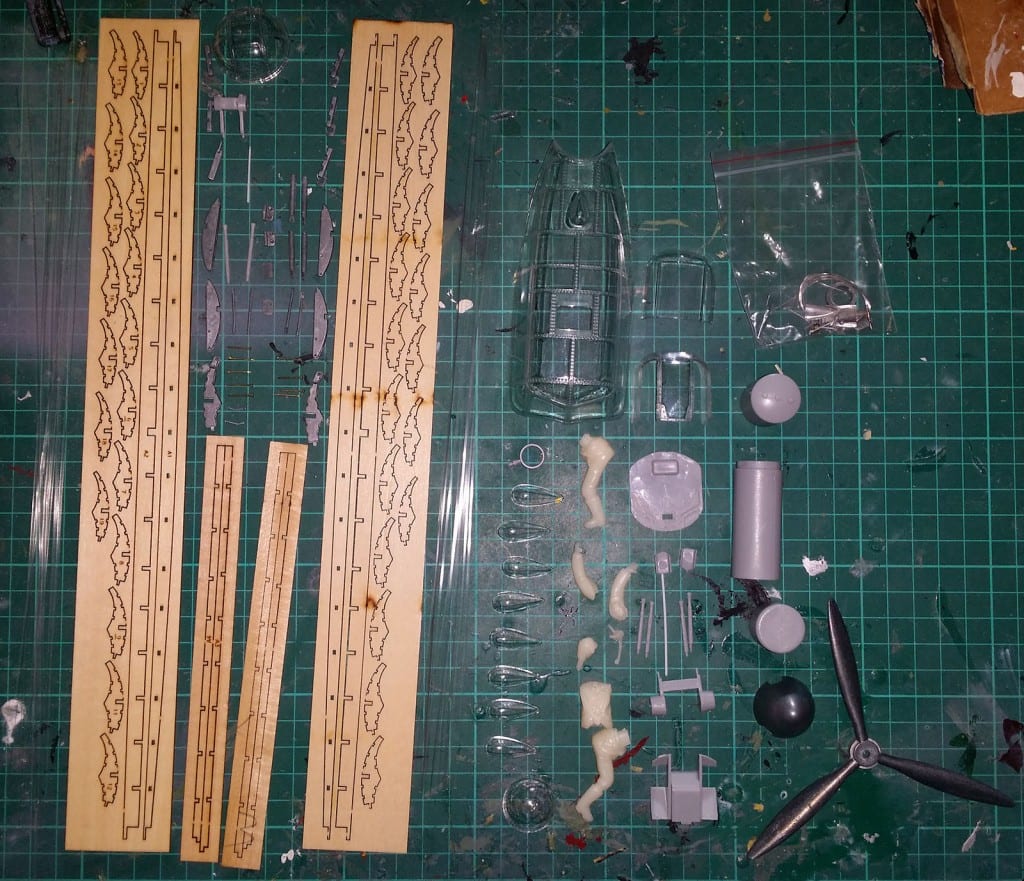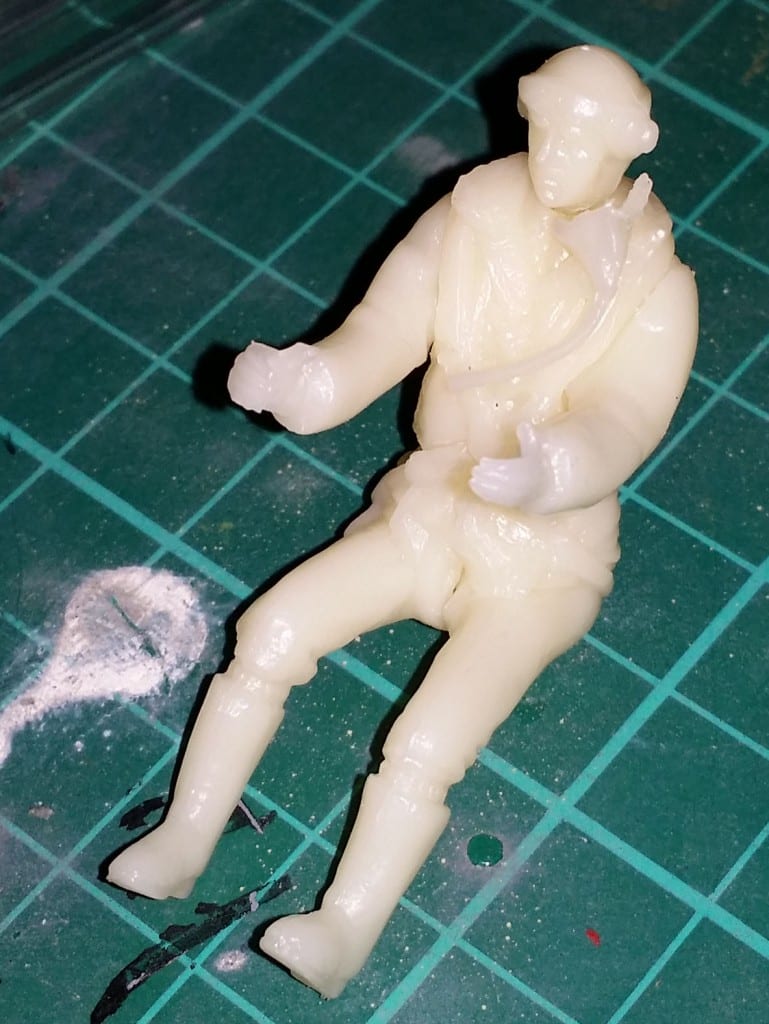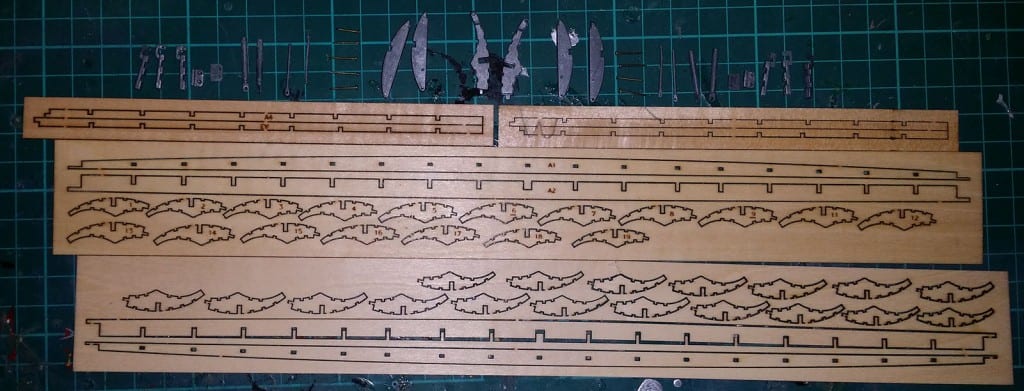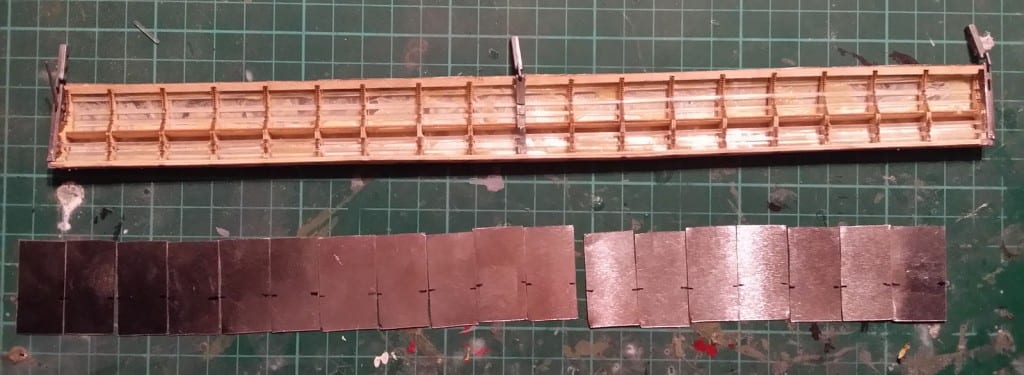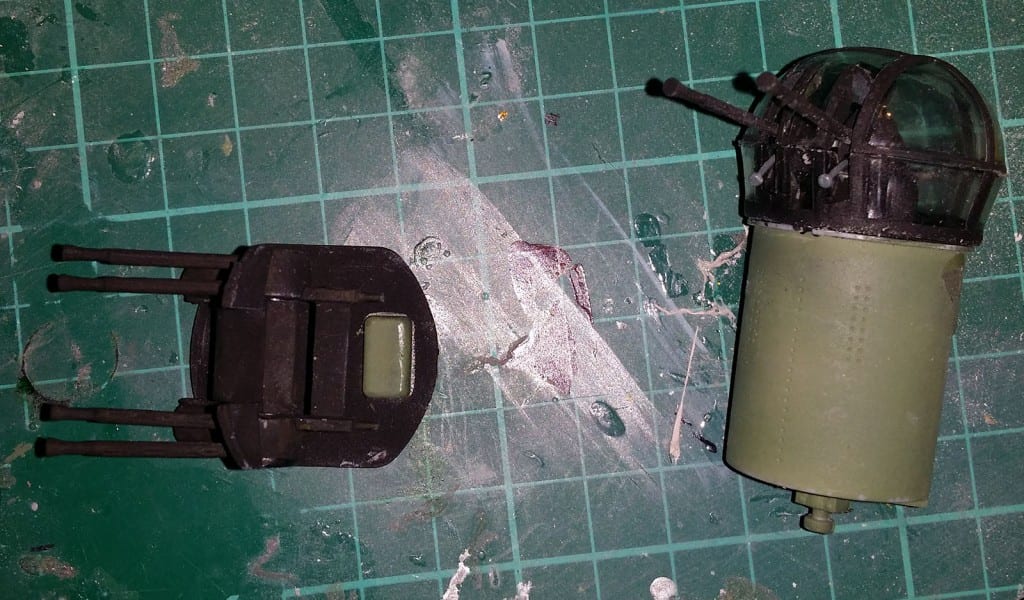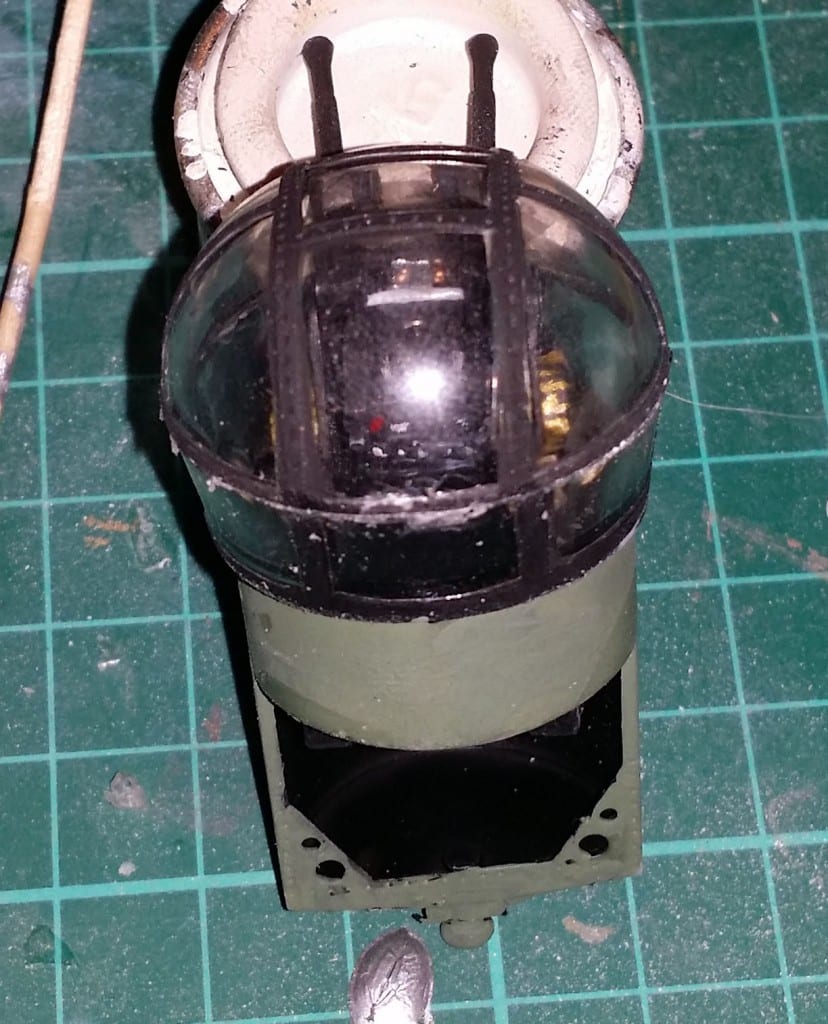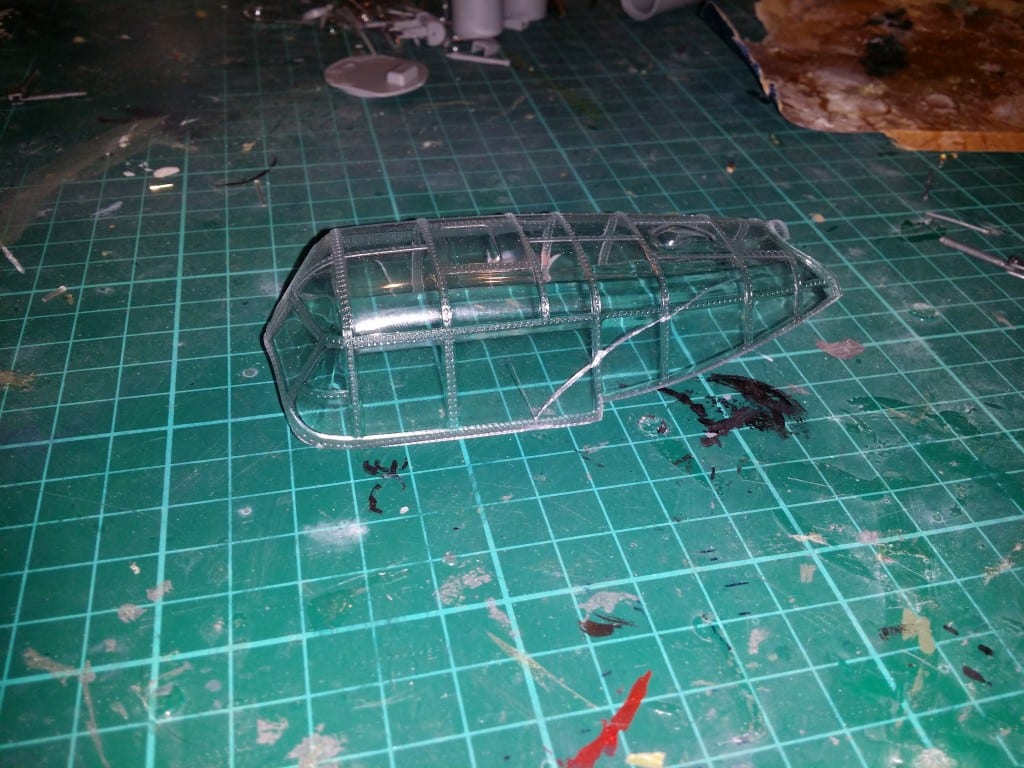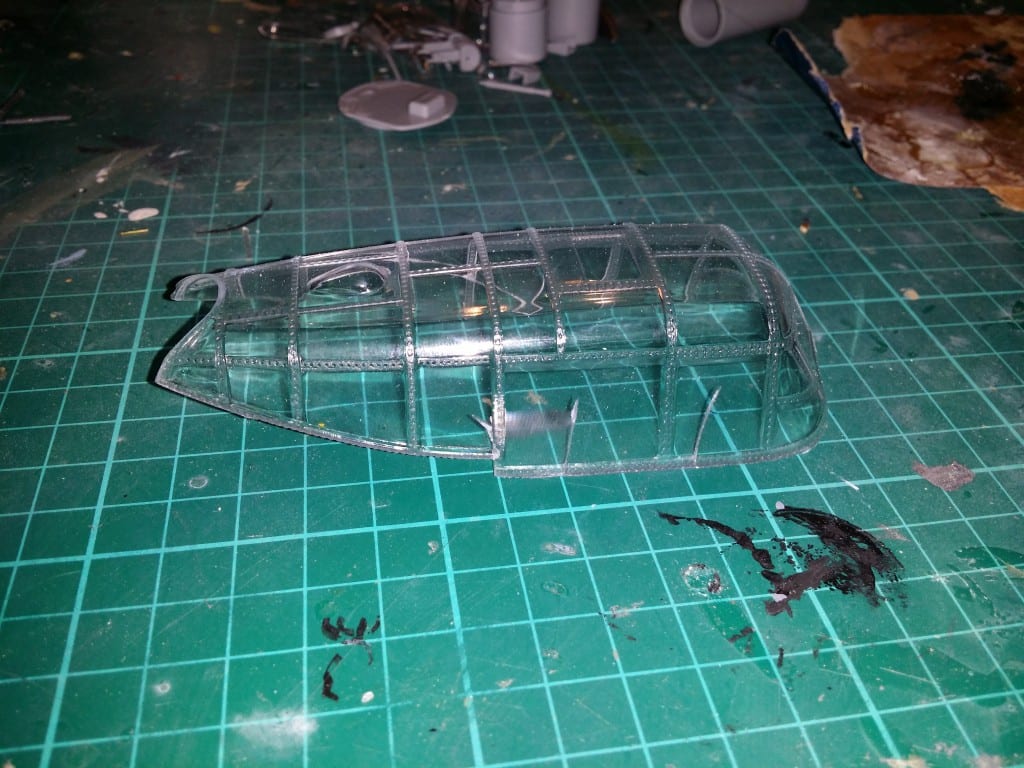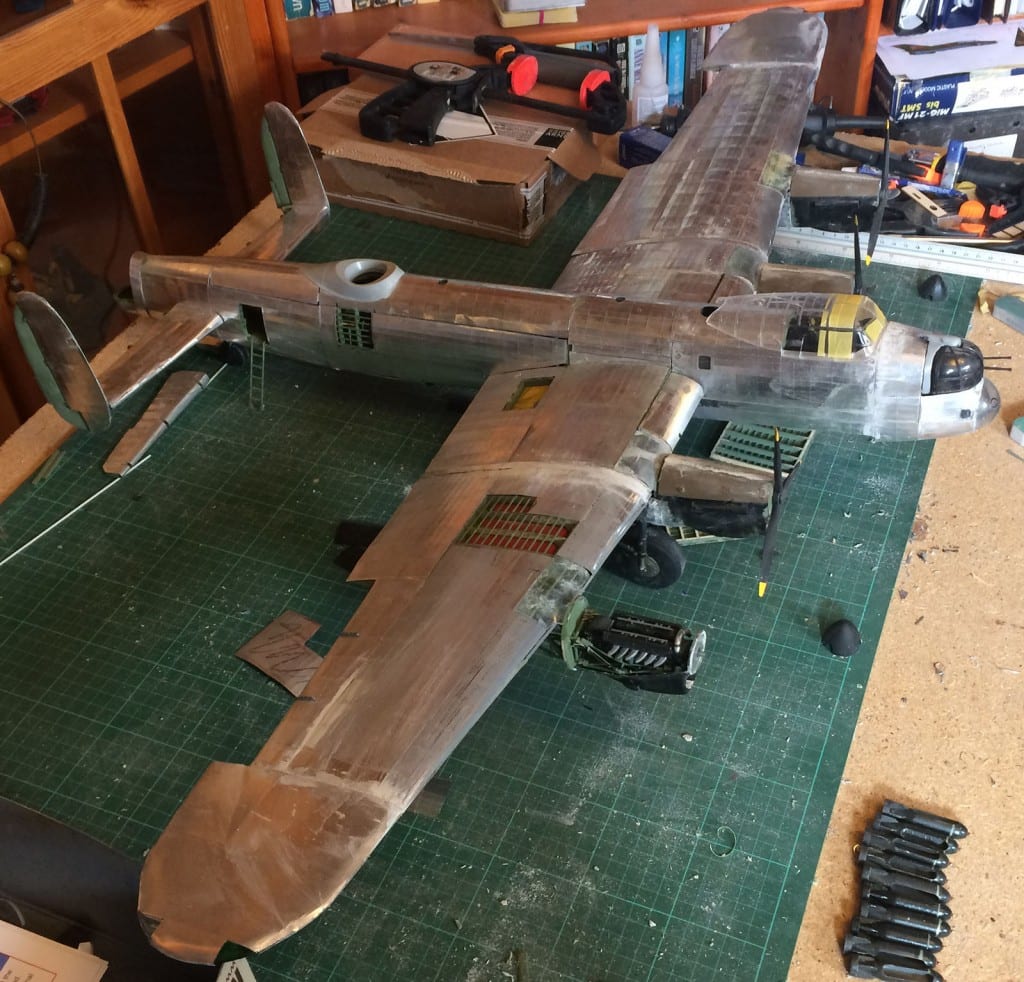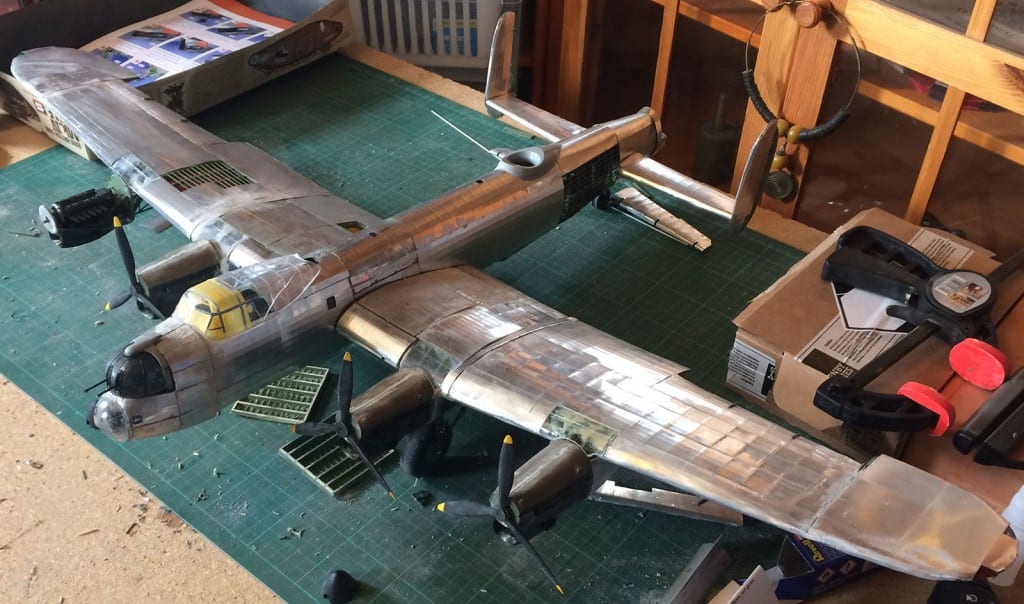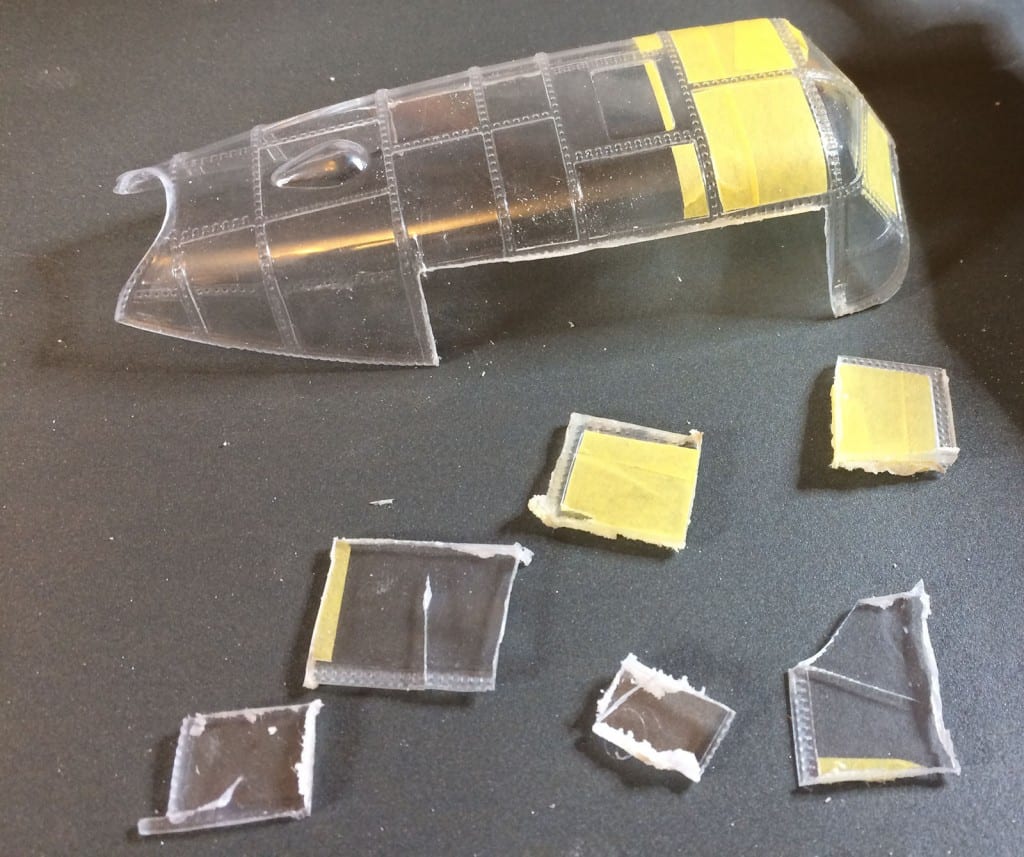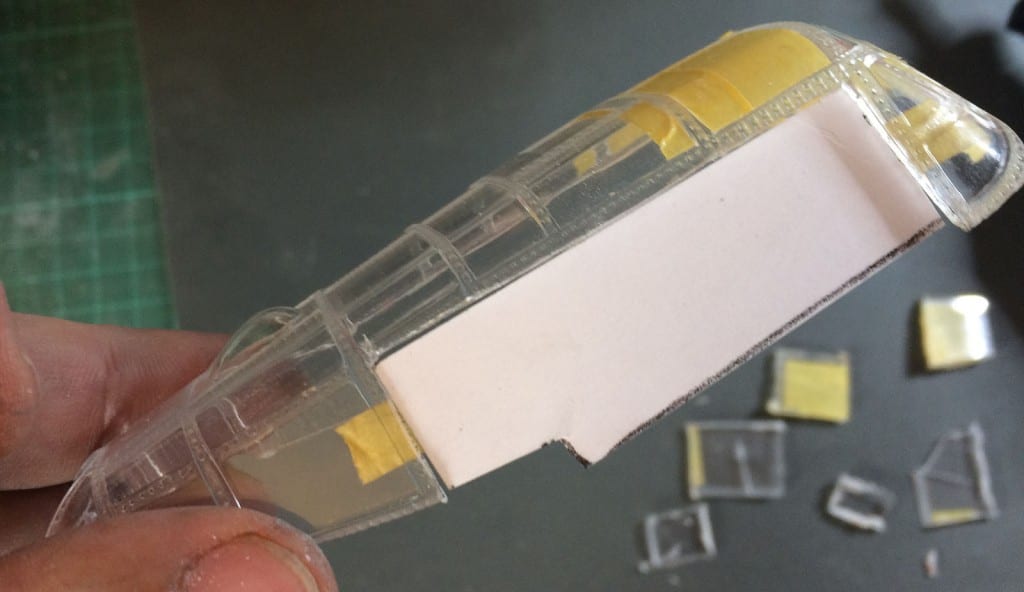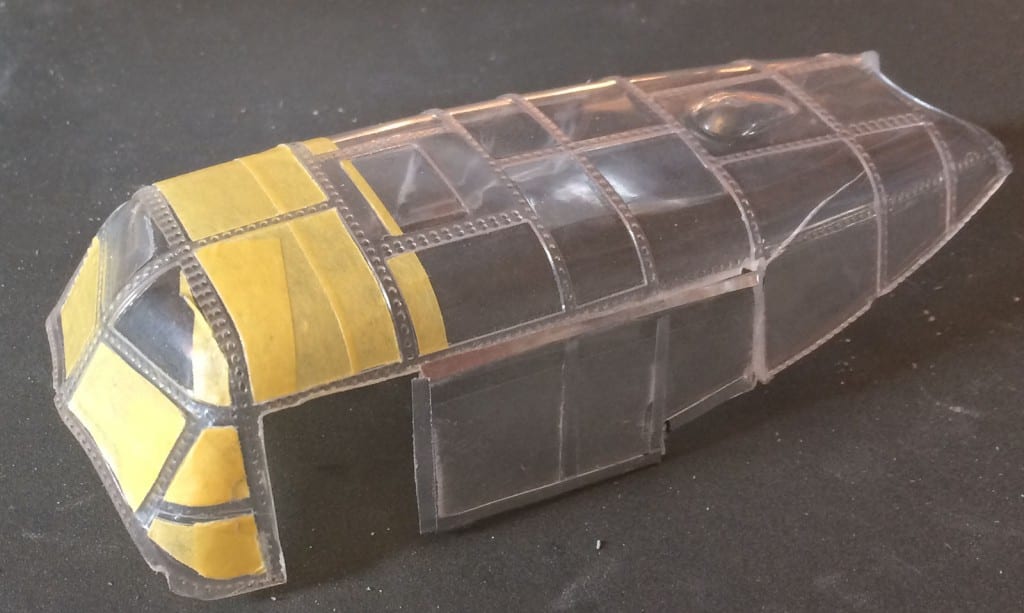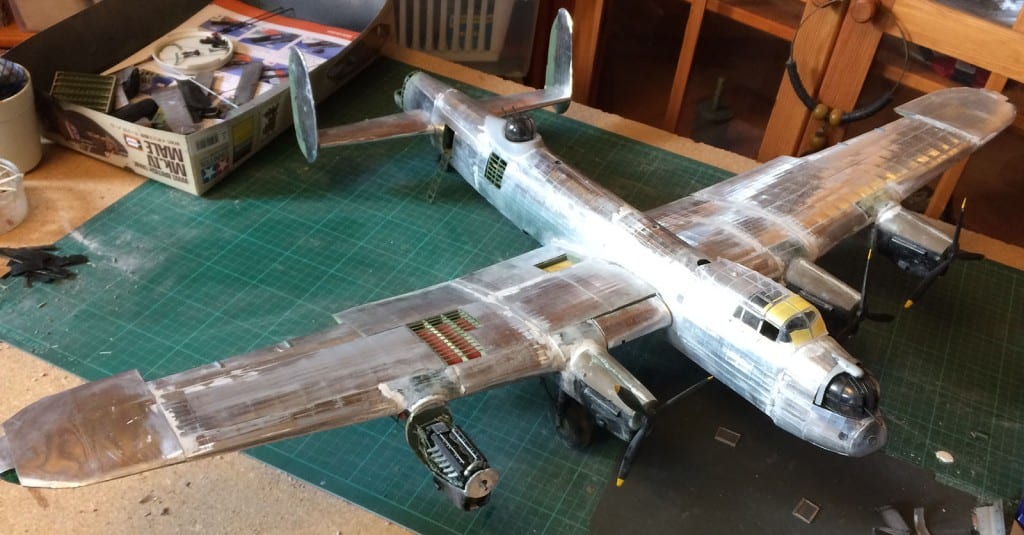Again, I need to apologise to everyone for the extremely long delay since the last build diary. Here at the Archive we’ve been working to finish all of the material for the exhibition which will open in the New Year at the Chadwick Centre on Canwick Hill near Lincoln and that has been taking up the vast majority of our time.
Last time we discussed creating the decals of the nose art selected in the poll, and talked about finishing off the main fuselage prior to painting it. The last blog ended with a photograph of the model with the black paint on its underside.
In the last month work on the model has continued apace, starting with a base coat of brown paint to start creating the camouflage, before masking the model to add the green part of the colour scheme.
Which was duly added.
We also finalised the cockpit, adding the pilot’s seat, control column, trim controls and rudder pedals to the cockpit.
Before attaching the canopy.
At this stage, the model looked like this.
We then moved on to adding the bomb bay doors.
Which involved first, attaching the hinges to the model.
Before attaching the pins to a mount installed into the bomb bay.
Whilst the model was upside-down we took the opportunity to add the red line along the underside of the nose, and the red rectangle around the dinghy hatch.
We also took the opportunity to permanently extend the undercarriage, and attach the undercarriage bay covers.
Before righting the model for a final time (and taking a lot of photographs to commemorate the situation).
Next, we added most of the remaining small details to the model including the two fins on the nose, a pitot tube and small details on the control surfaces.
Before moving on to the decals which came in two groups; the decals which came with the model, and the decals which we had produced (with lots of spares).
Once we’d added the flashes to the vertical stabilisers it became possible to permanently attach the horizontal and vertical stabilisers to the model and to add the two sets of weights to each of the rudders.
That done, we continued adding the decals to the relevant sections of the fuselage.
You will be able to see white lines and colour changes in the black surrounding the decals in the photographs above. These were painted over to hide the edges of the decals, and a couple of layers of varnish were added to finish off the model.
And, finally it was time to deliver the model the IBCC Digital Archive, where it will stay until we can find somewhere to keep it.
This is not the end of our work, we will be creating a diorama to place the model on over the next few weeks, and our progress will be covered on this blog, but the model aircraft itself is finished.
Here are two photographs of the main builders with the model, Robin Evans on the left, James Evans on the right.
Finally, as a reminder of how far this build has come, the model with the box it came in.
